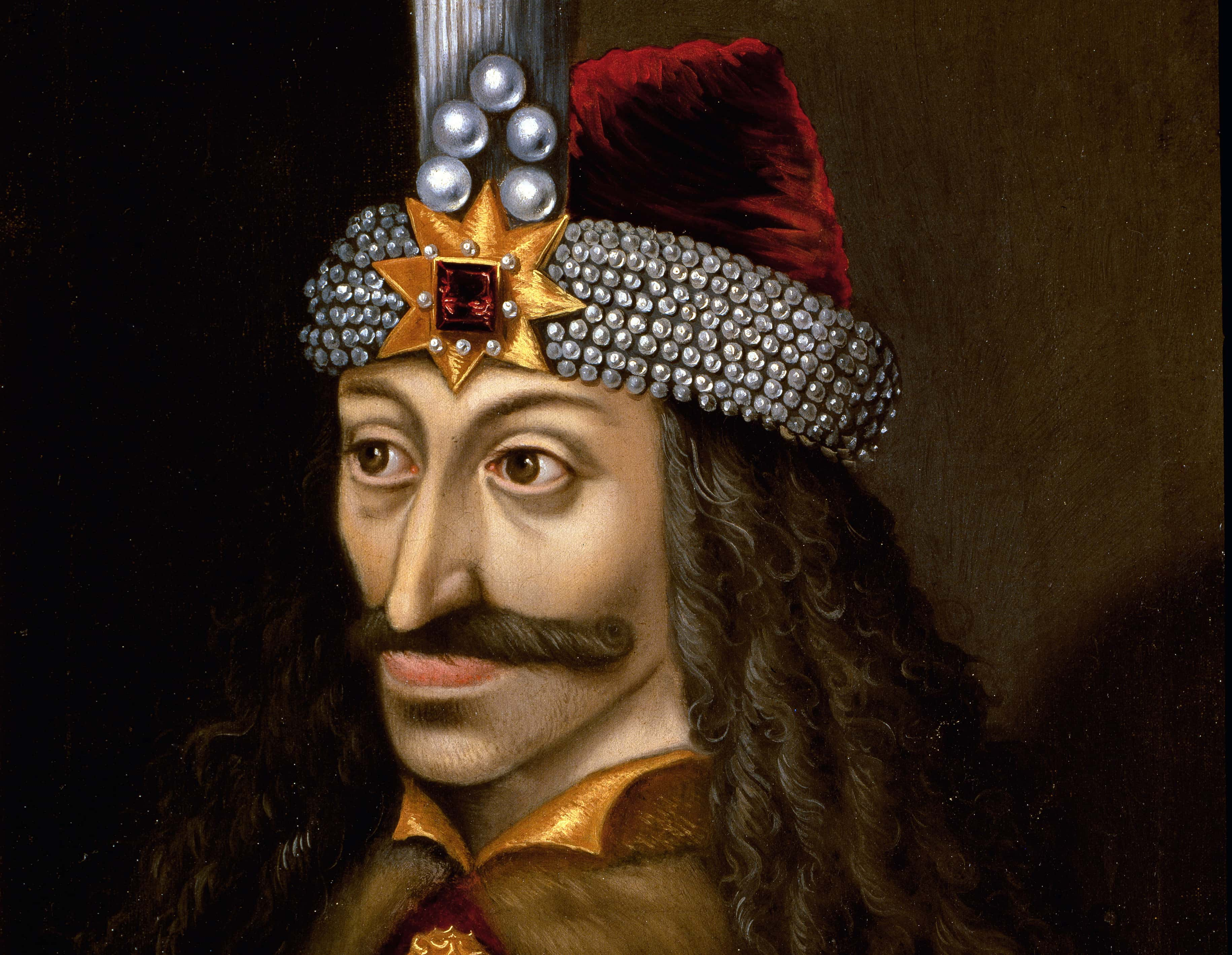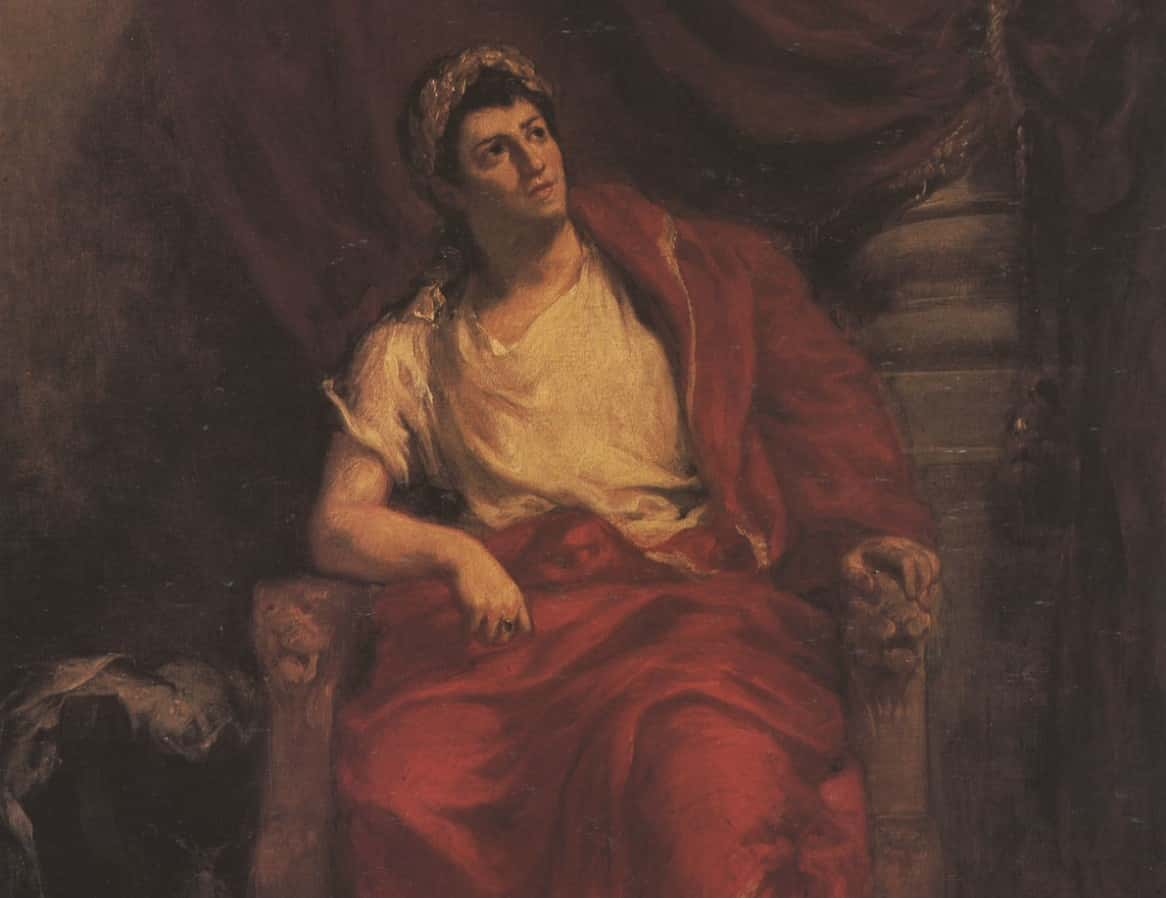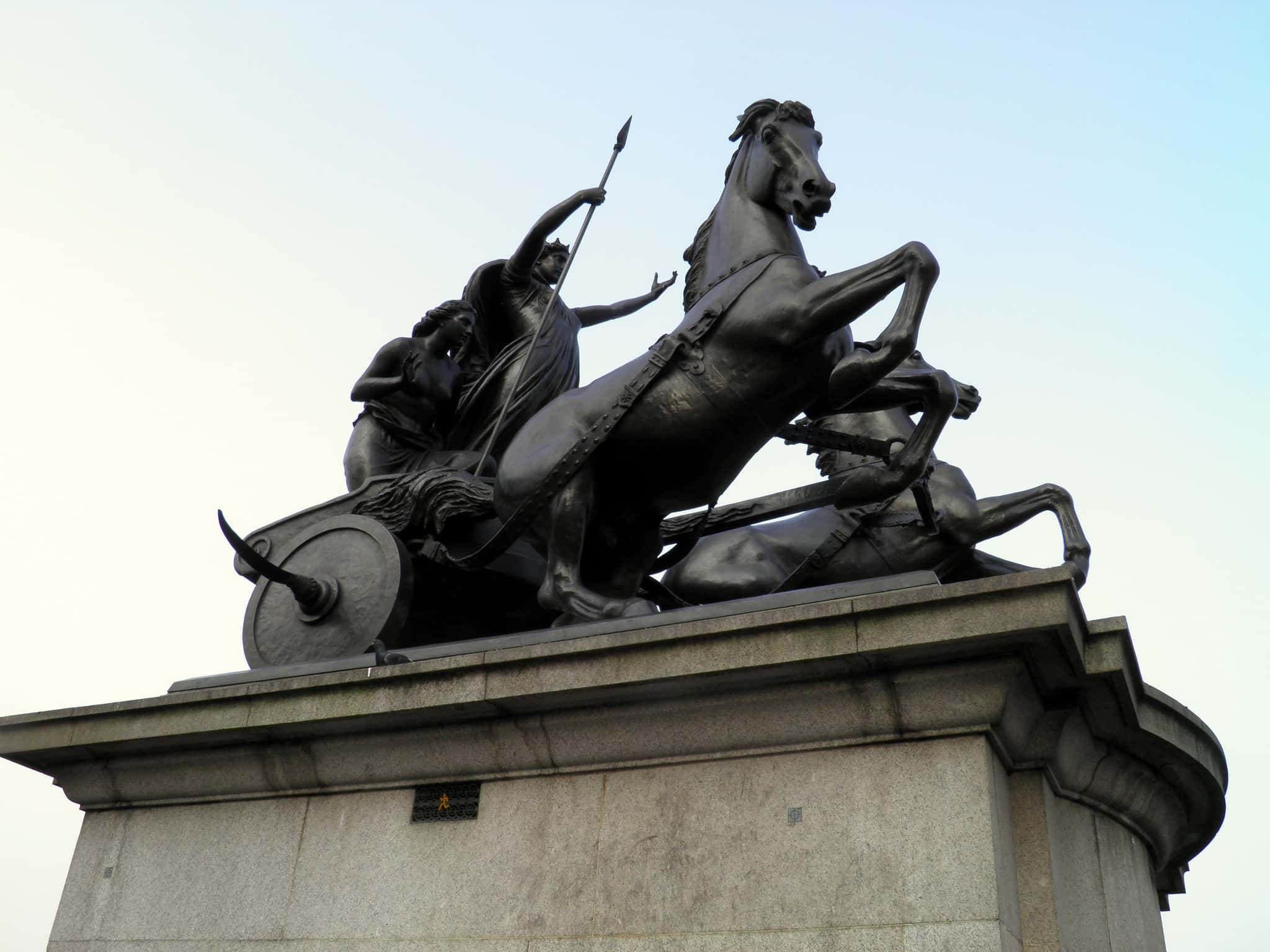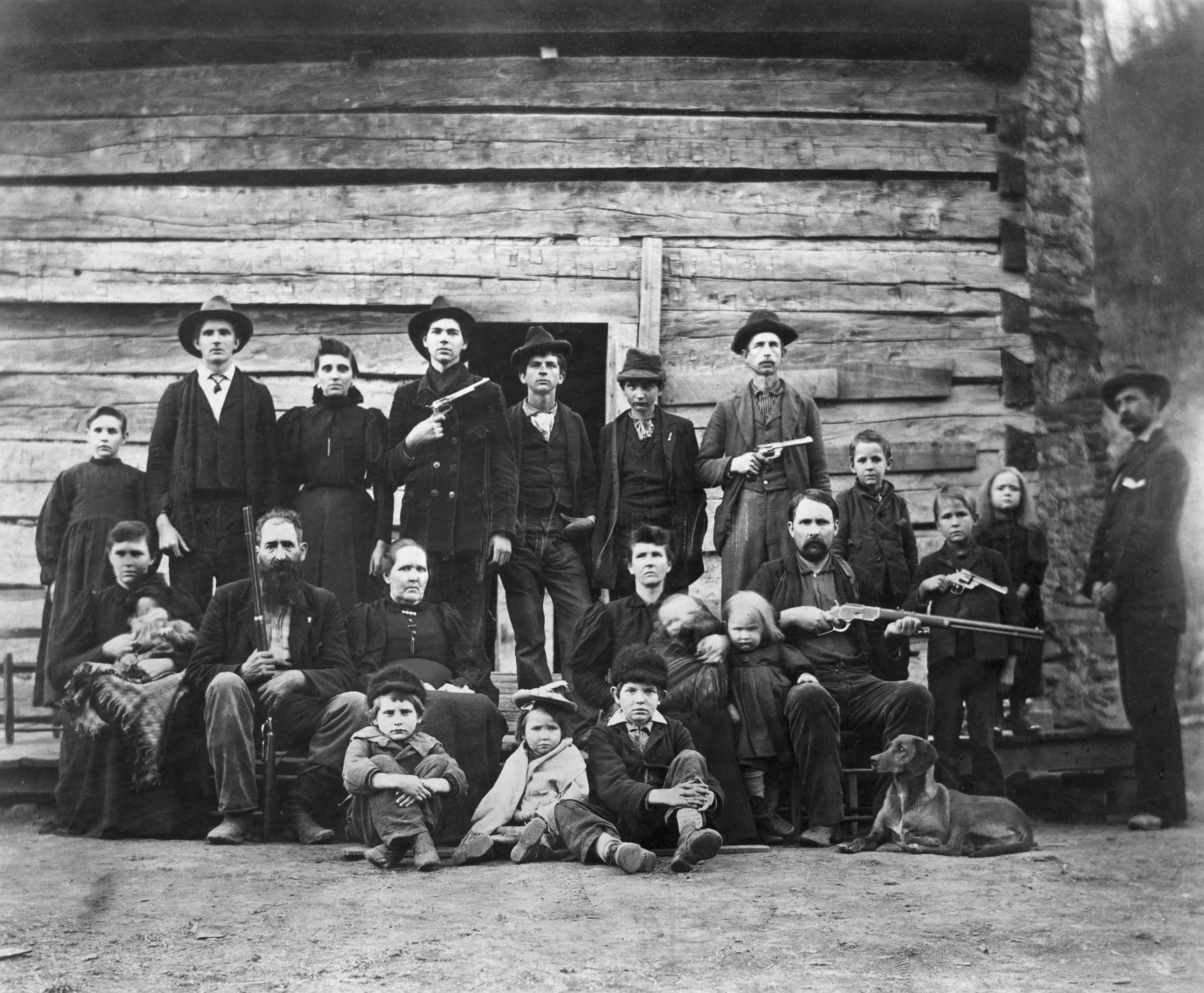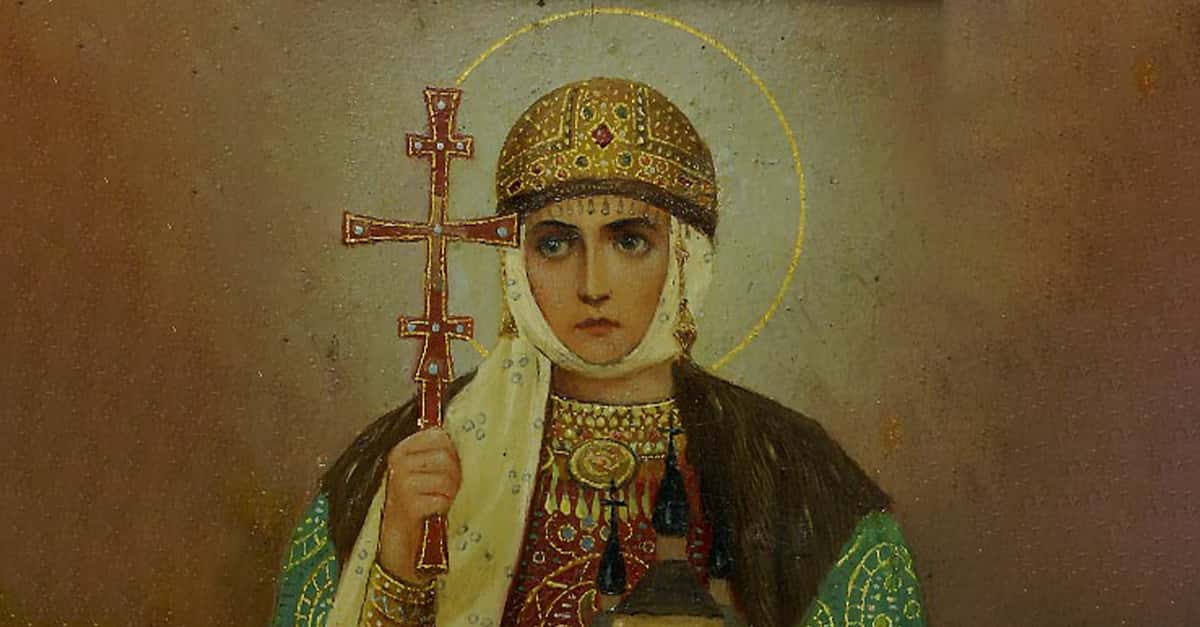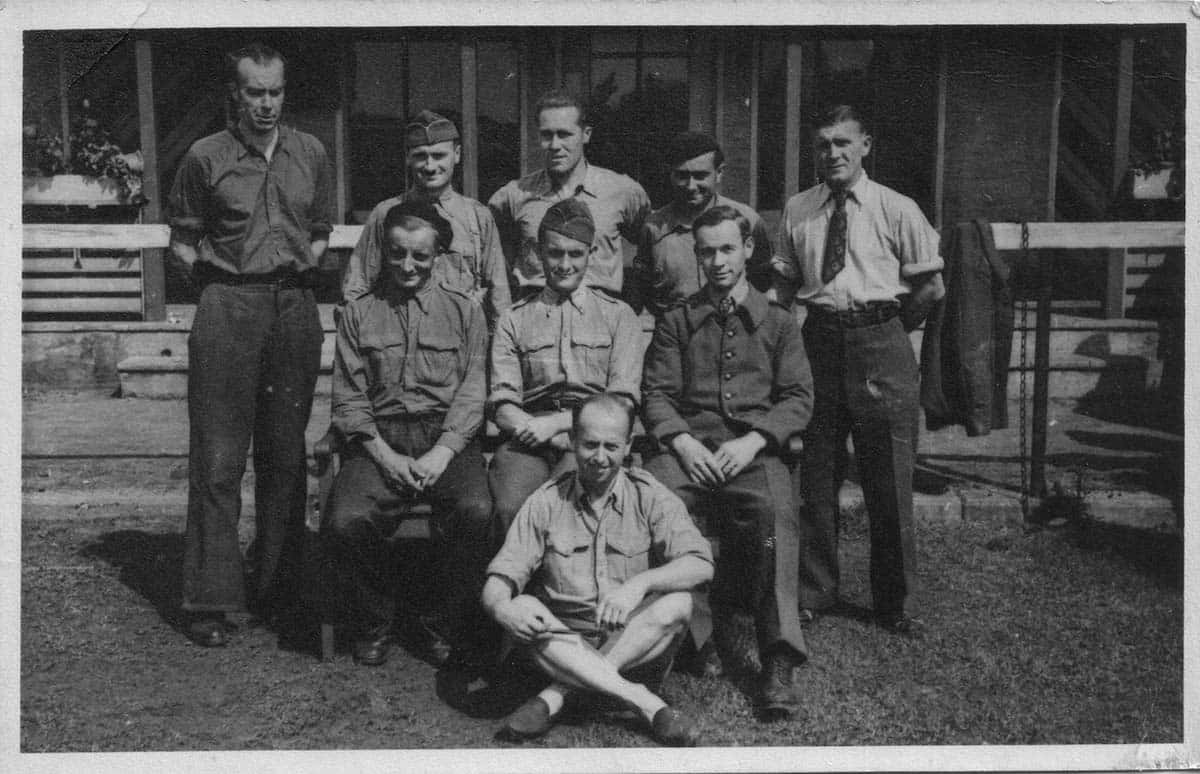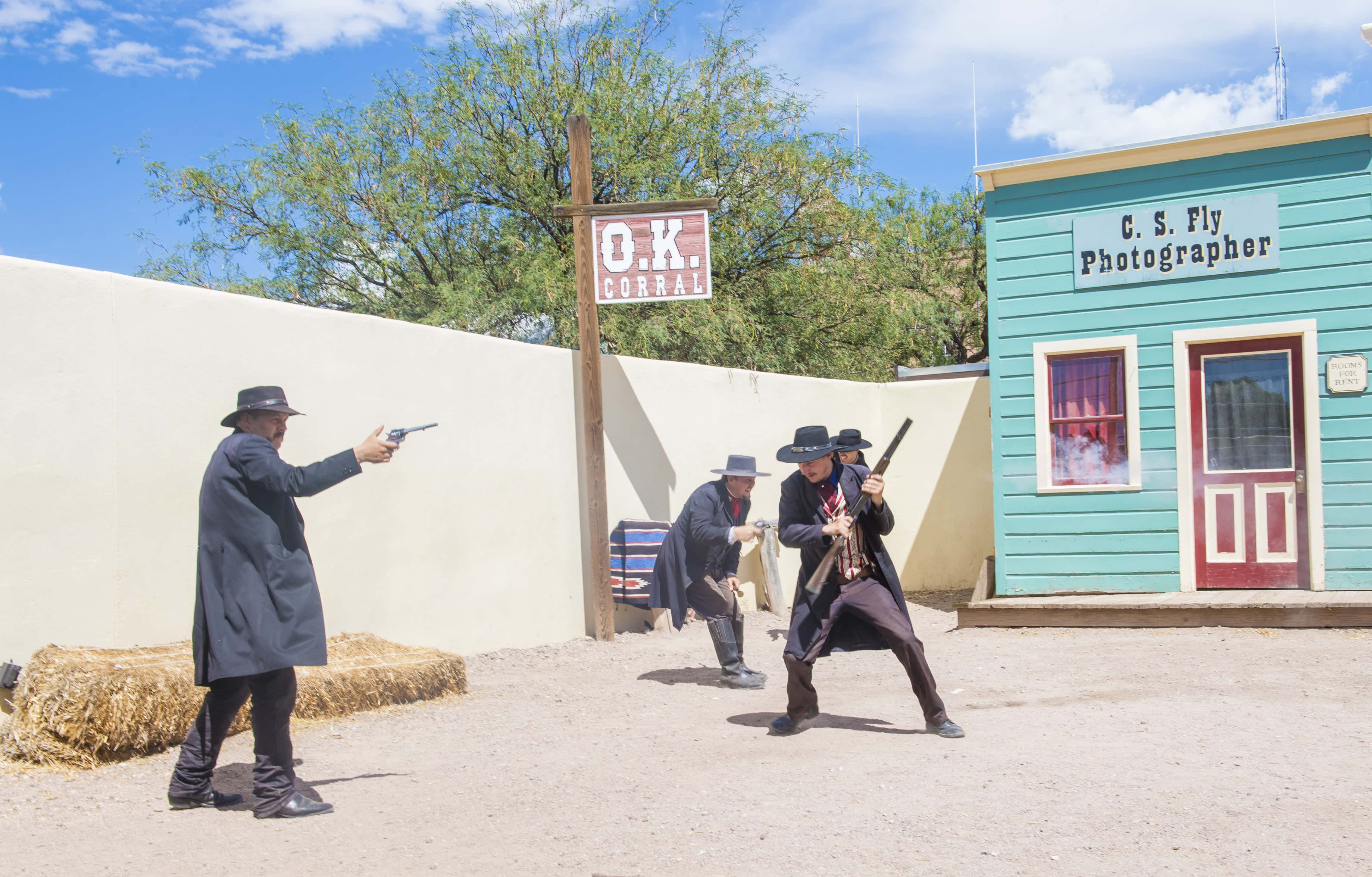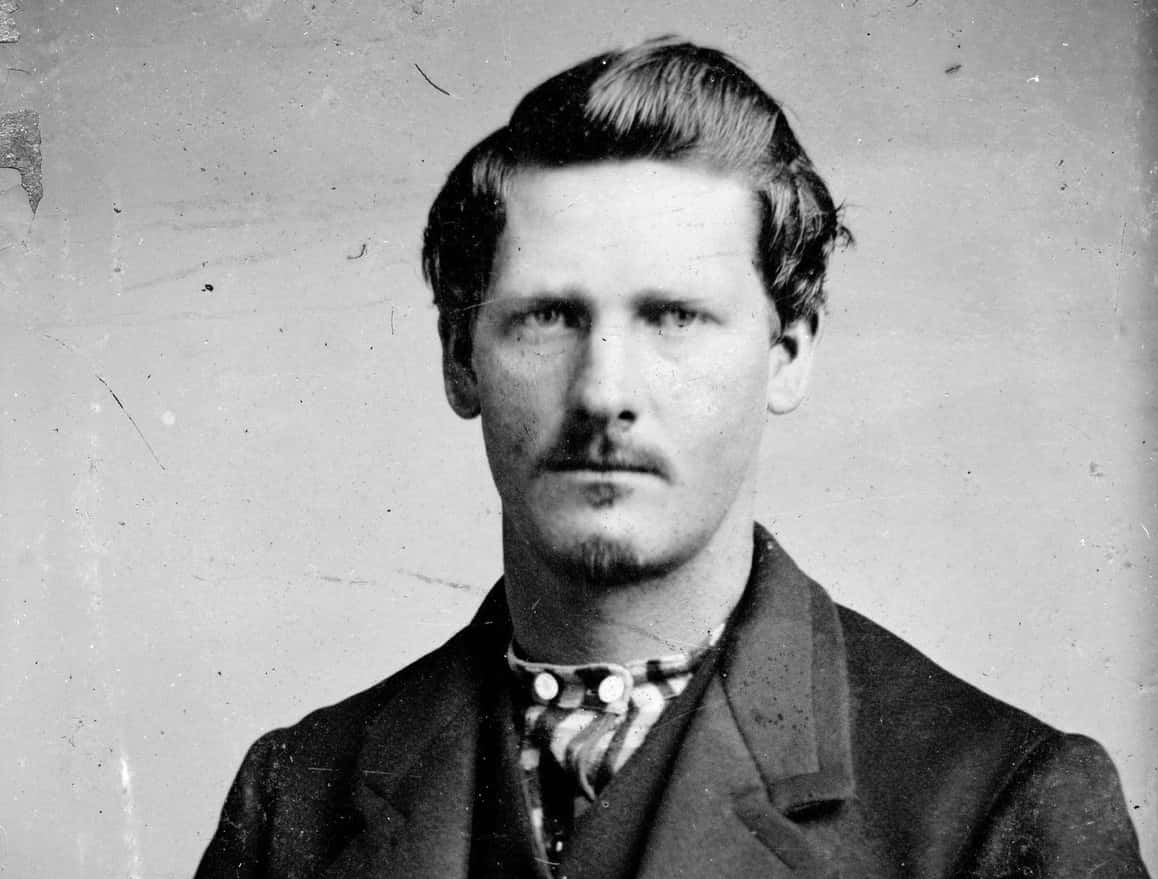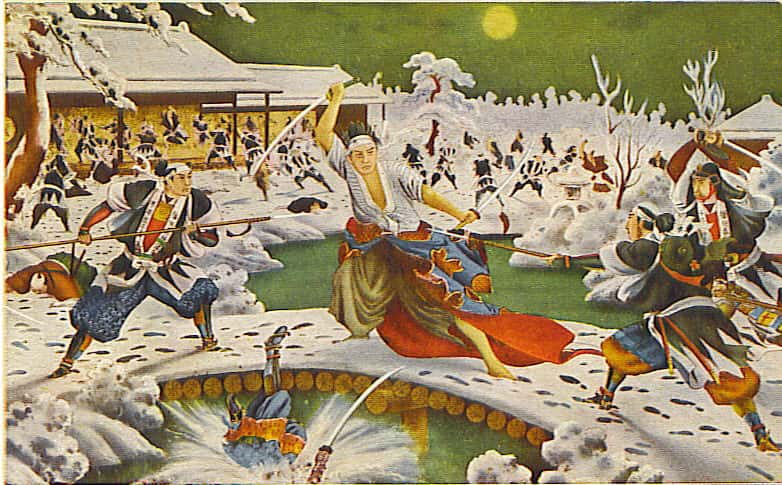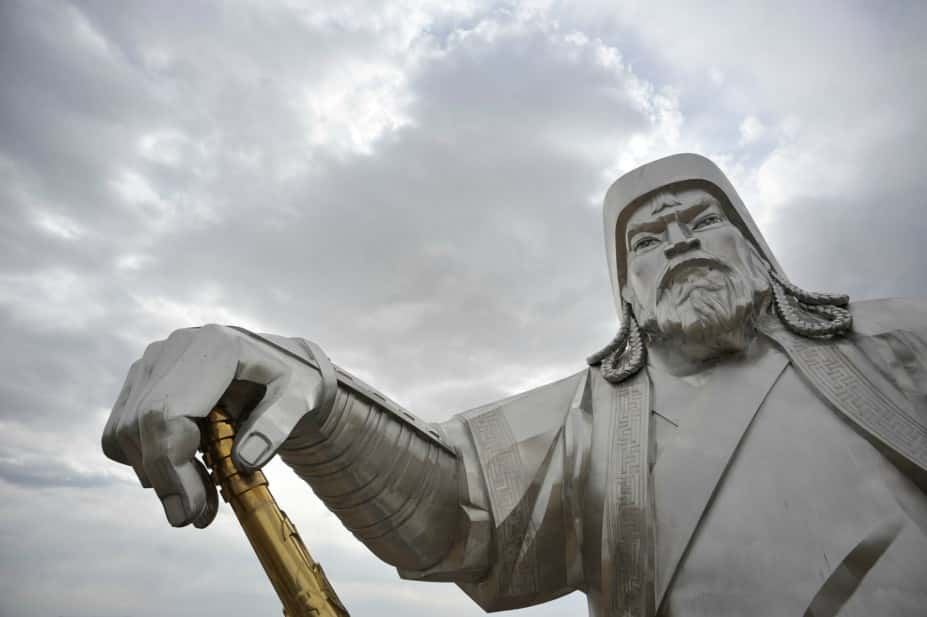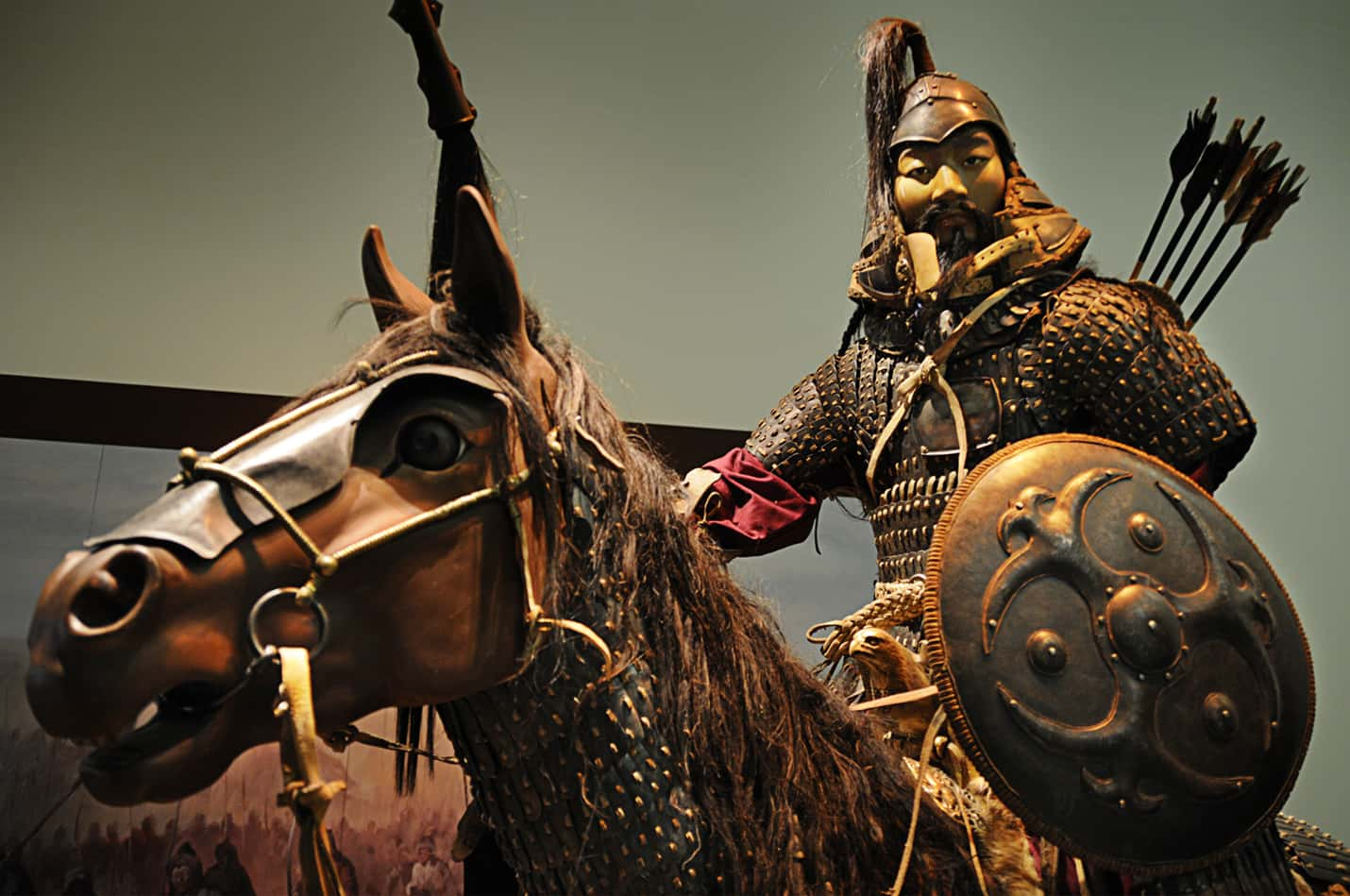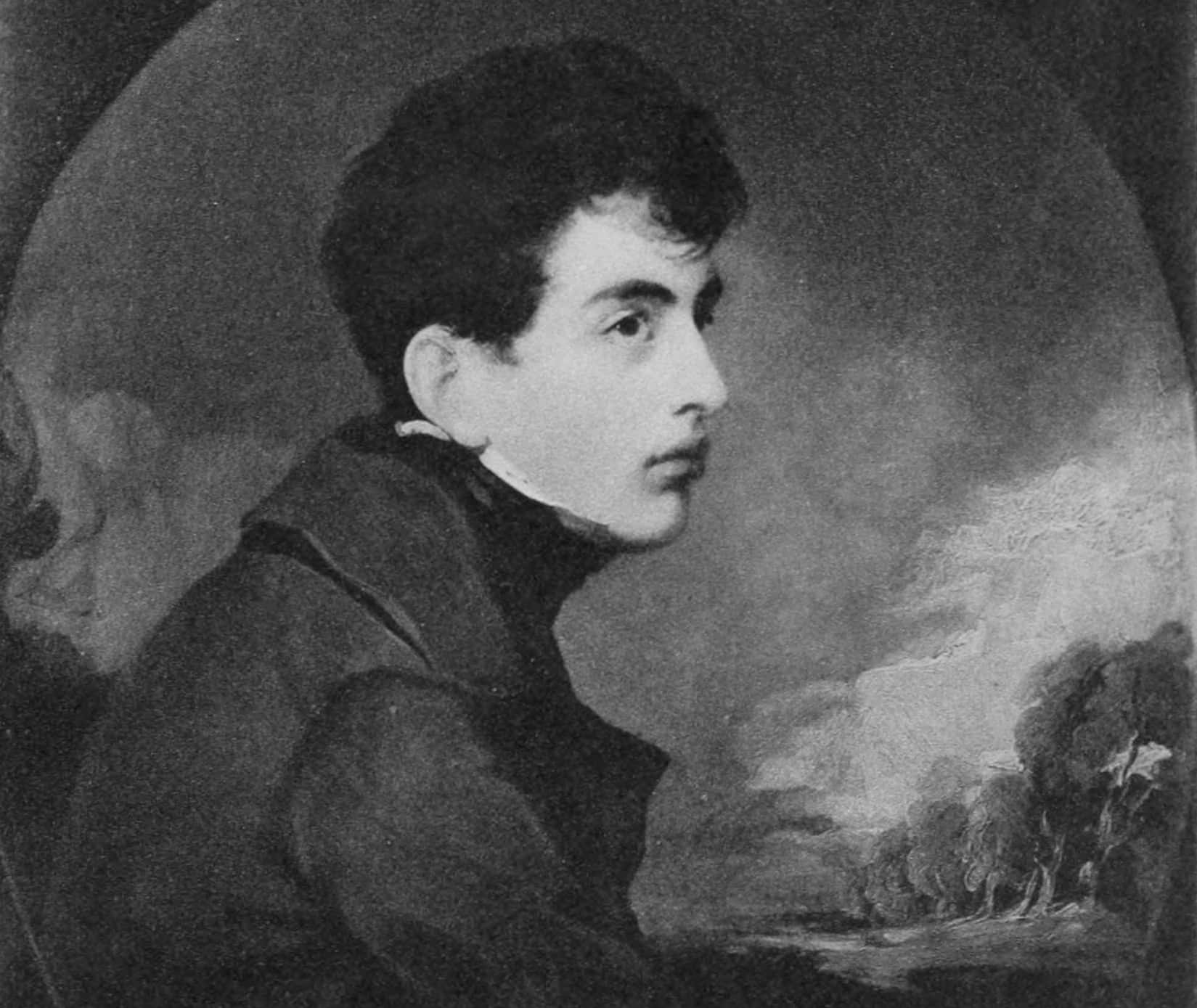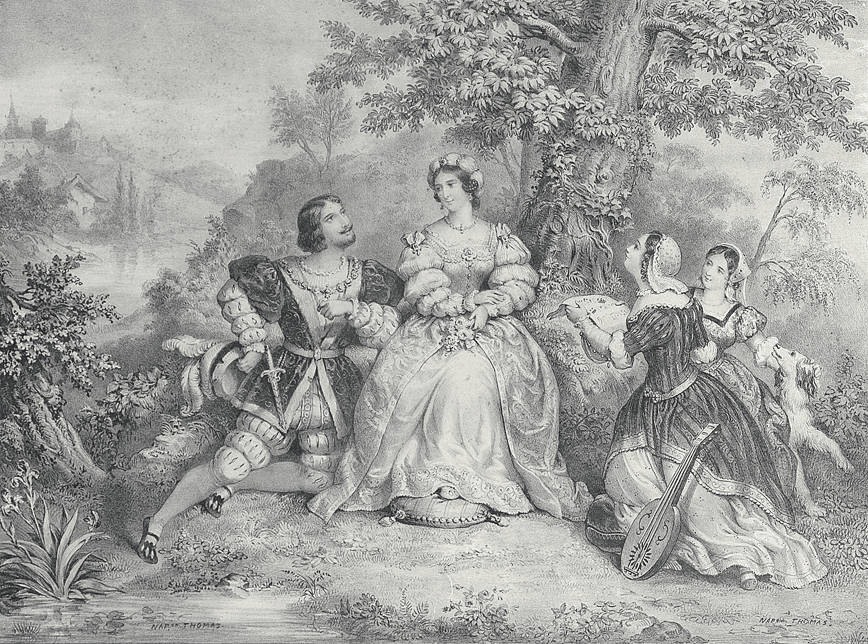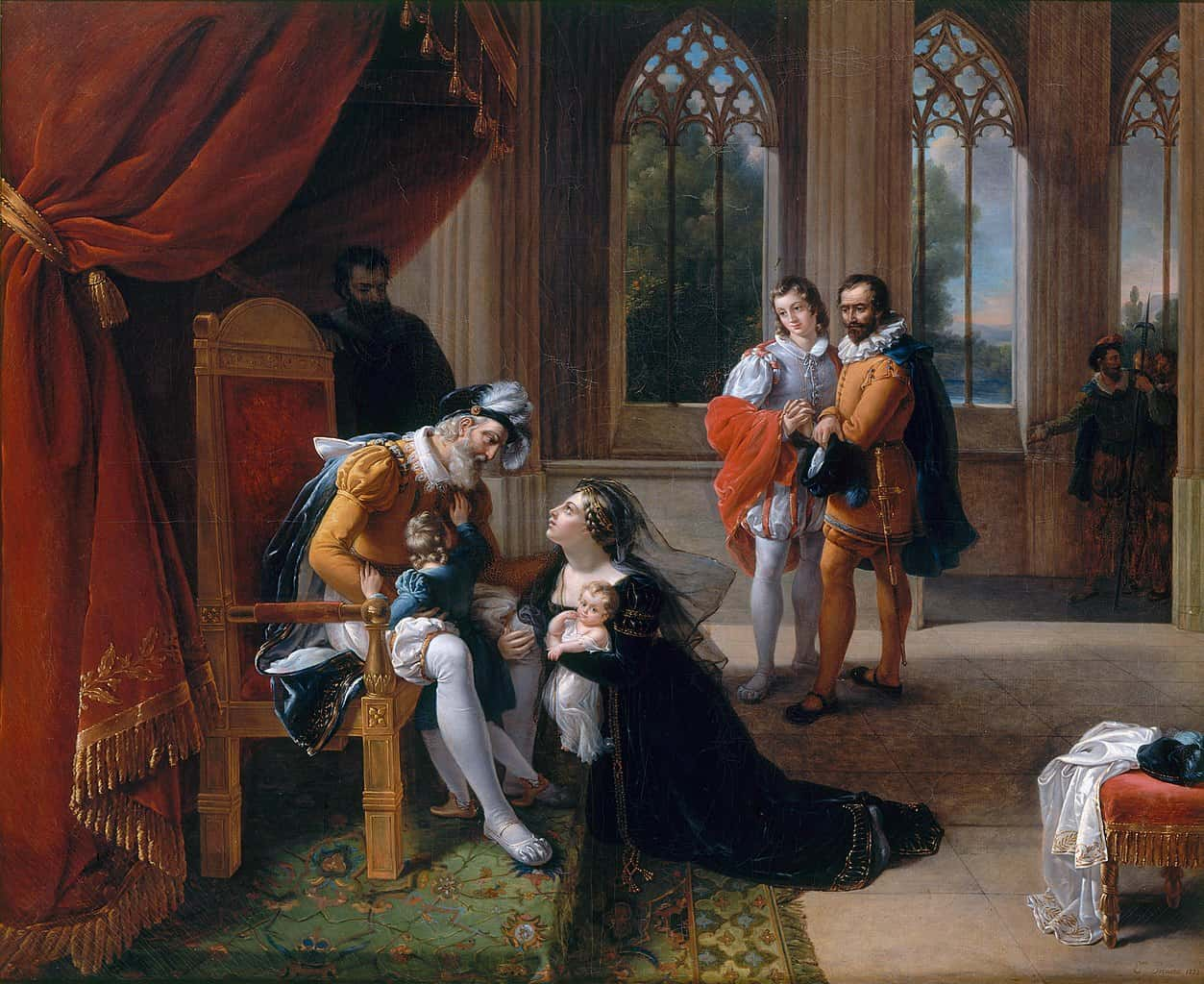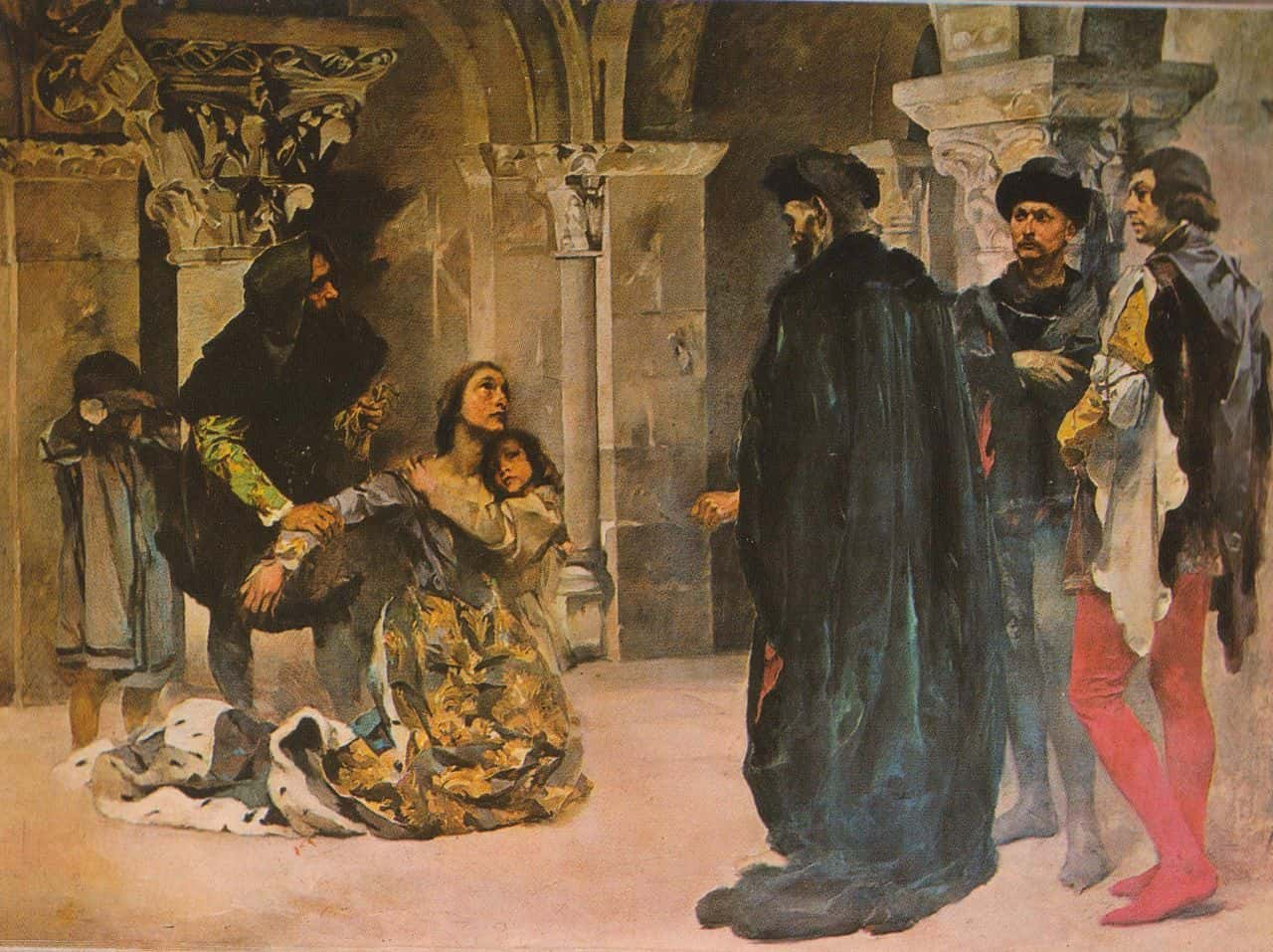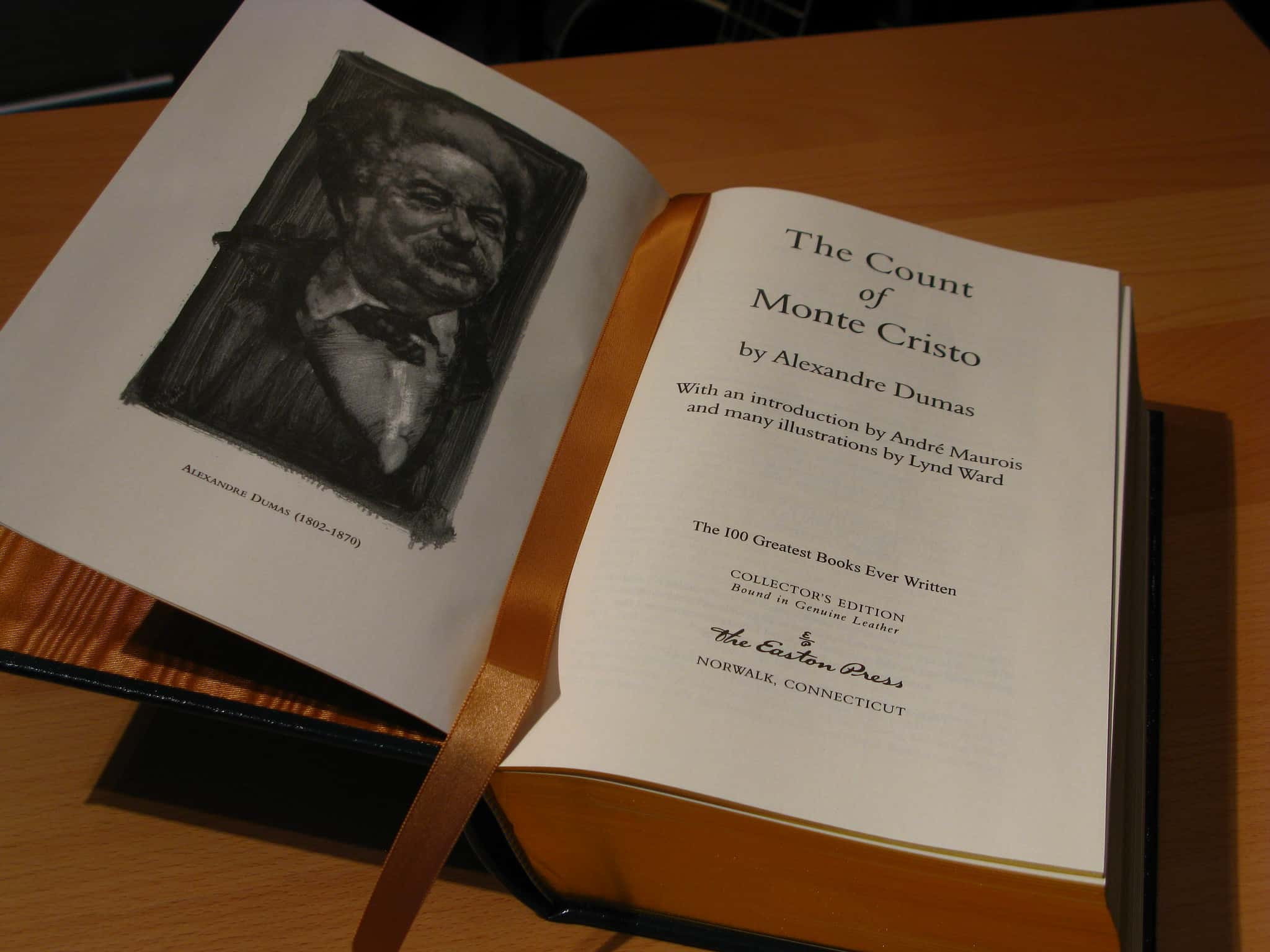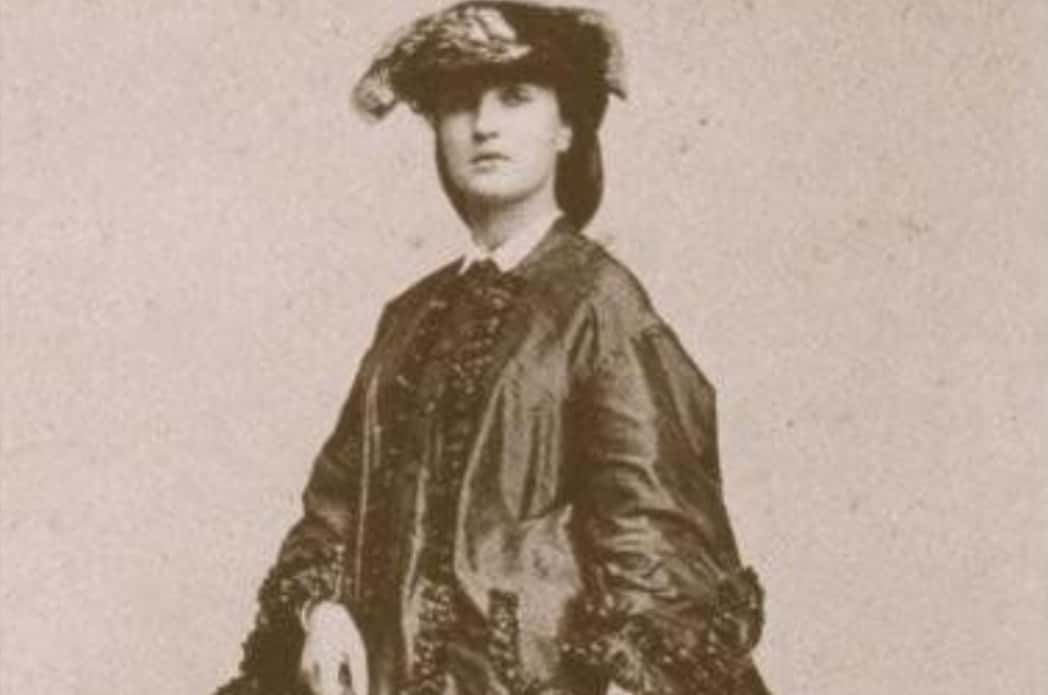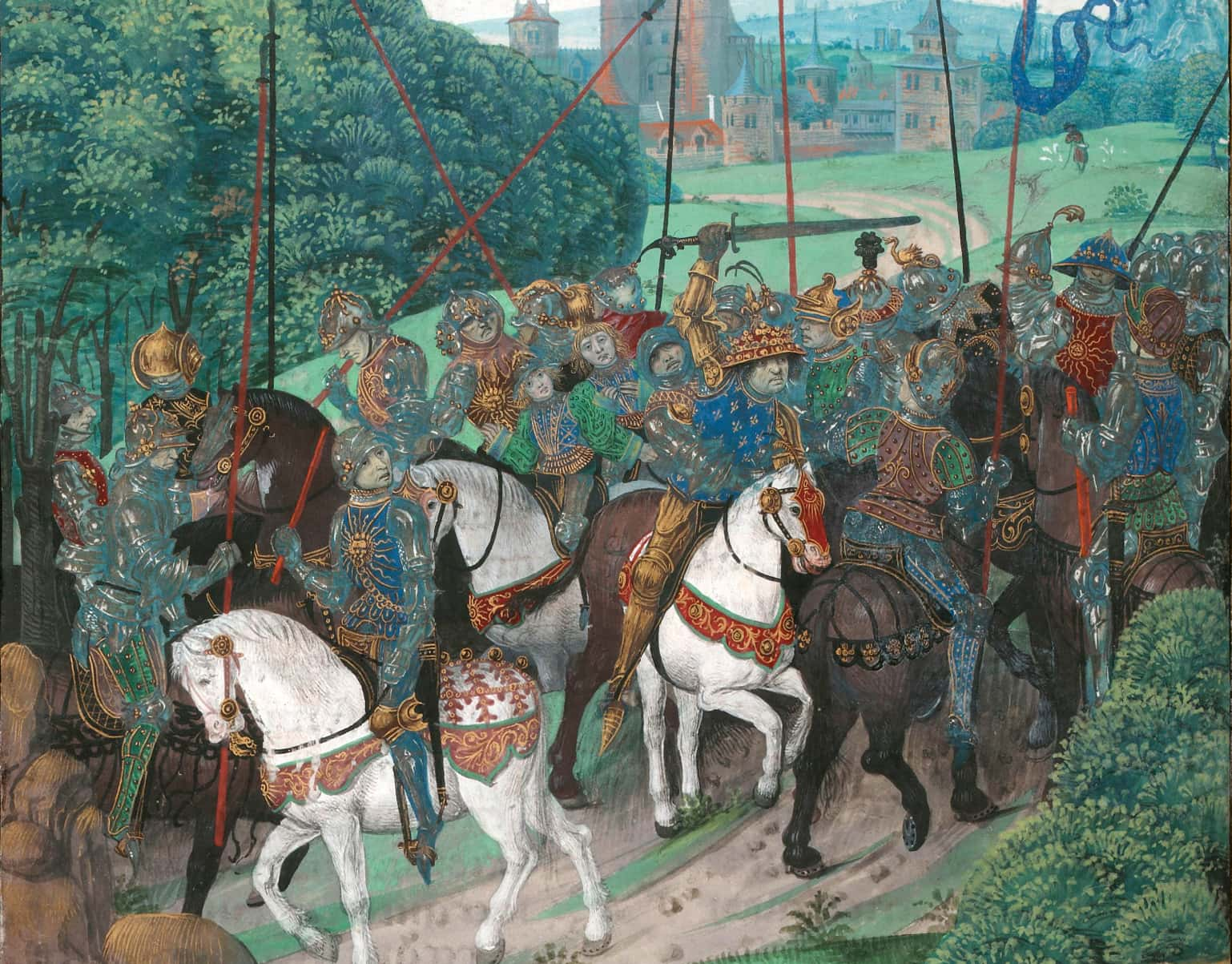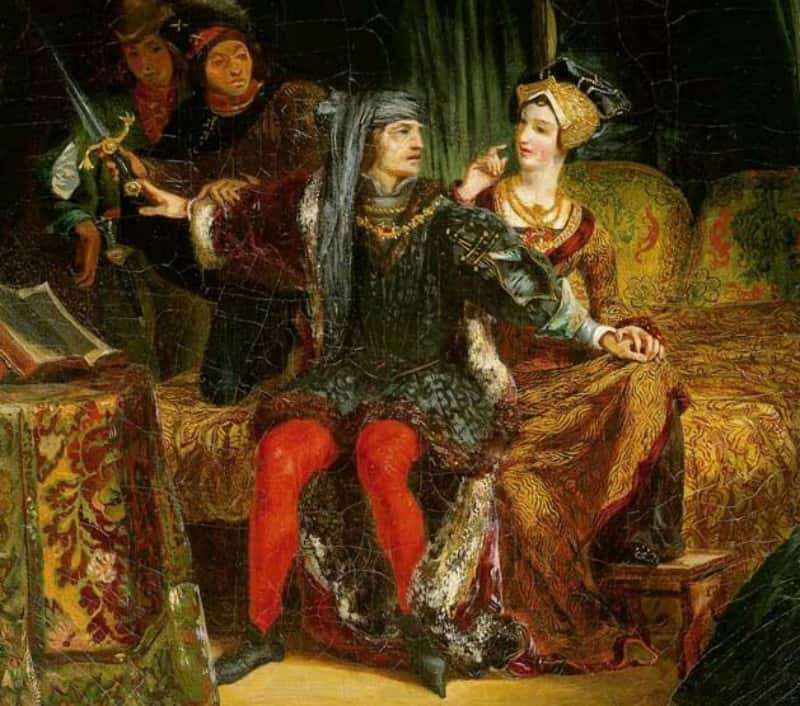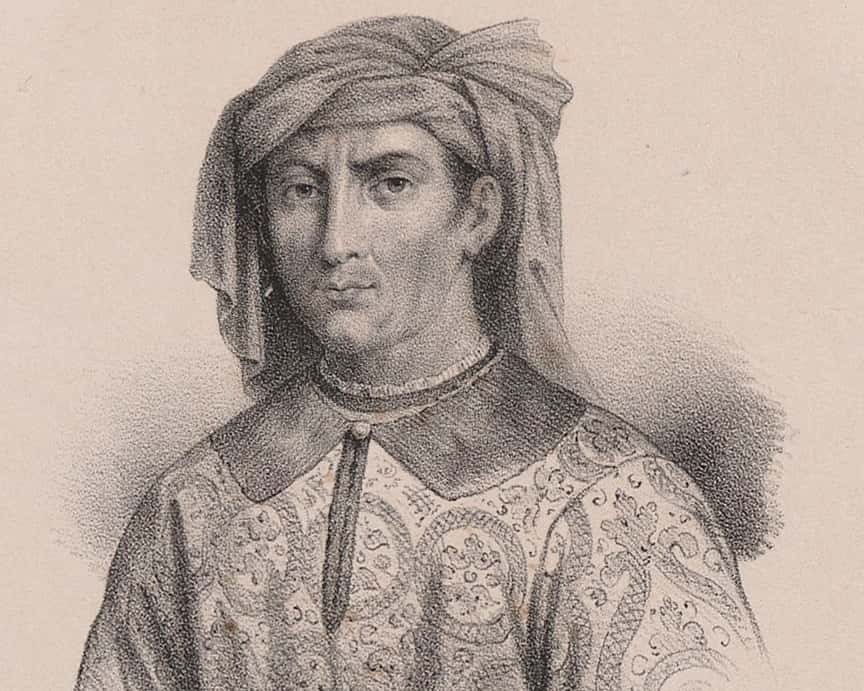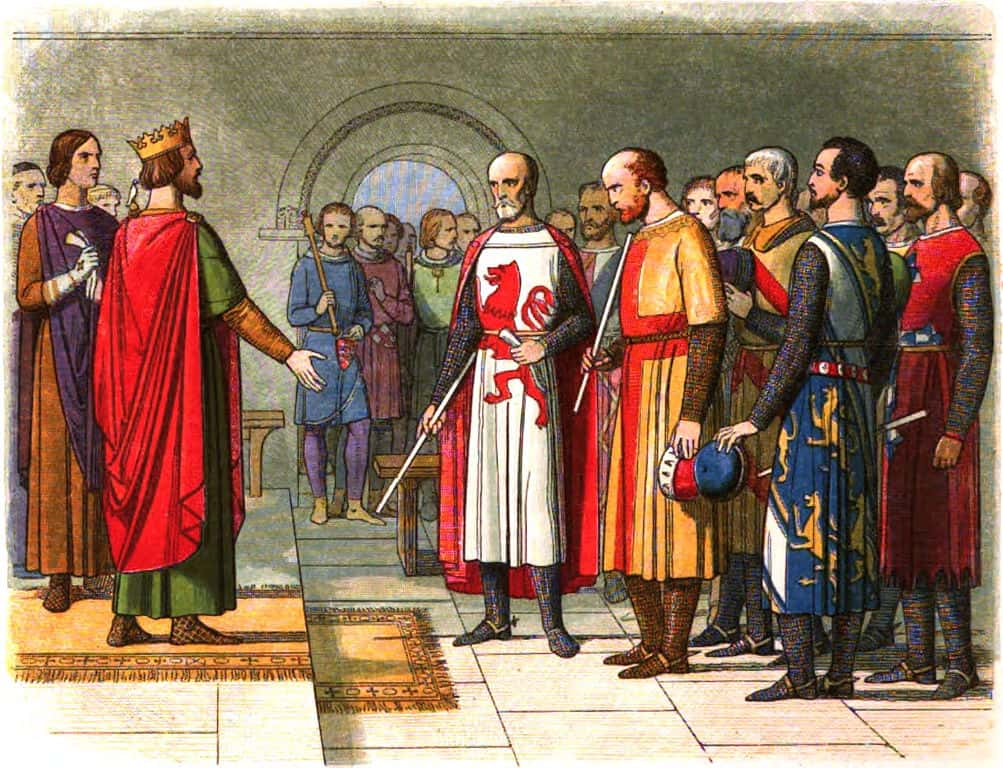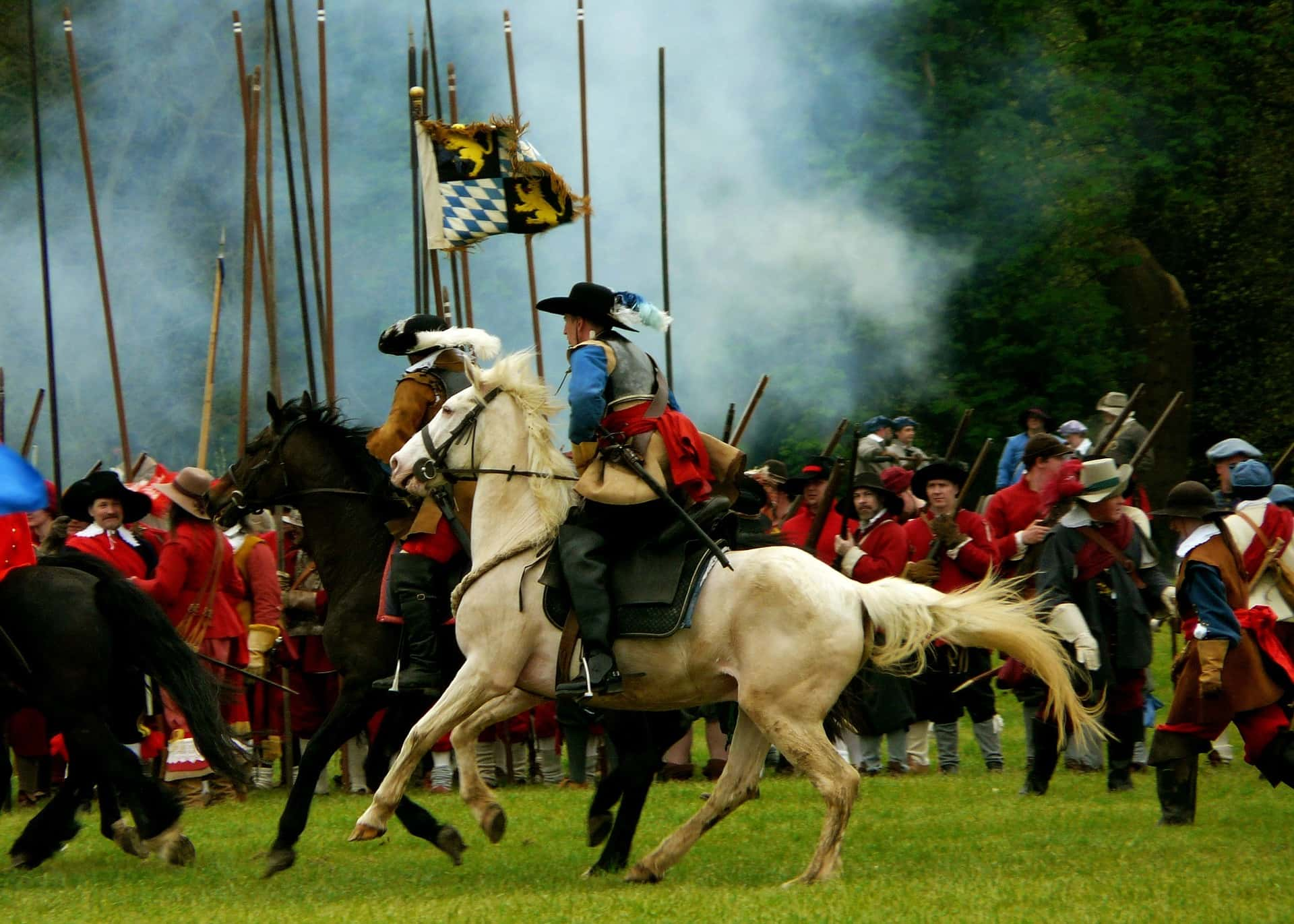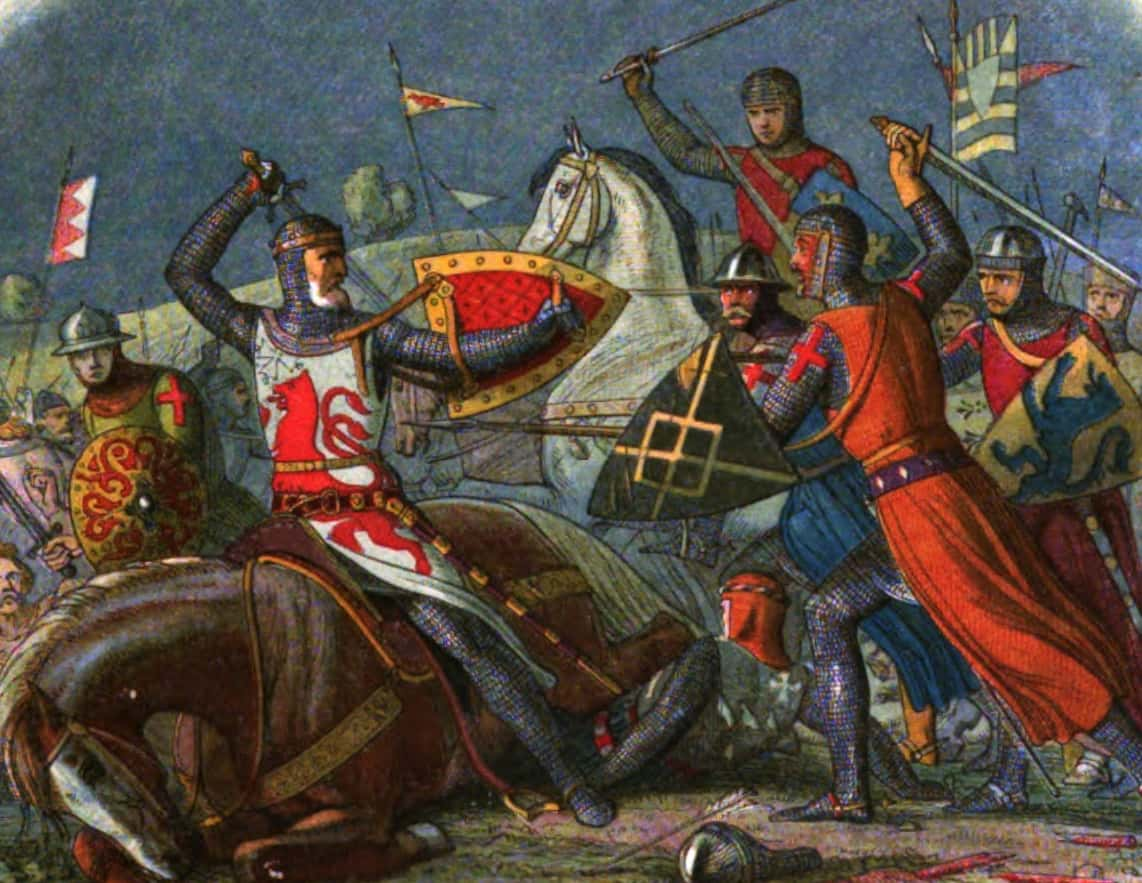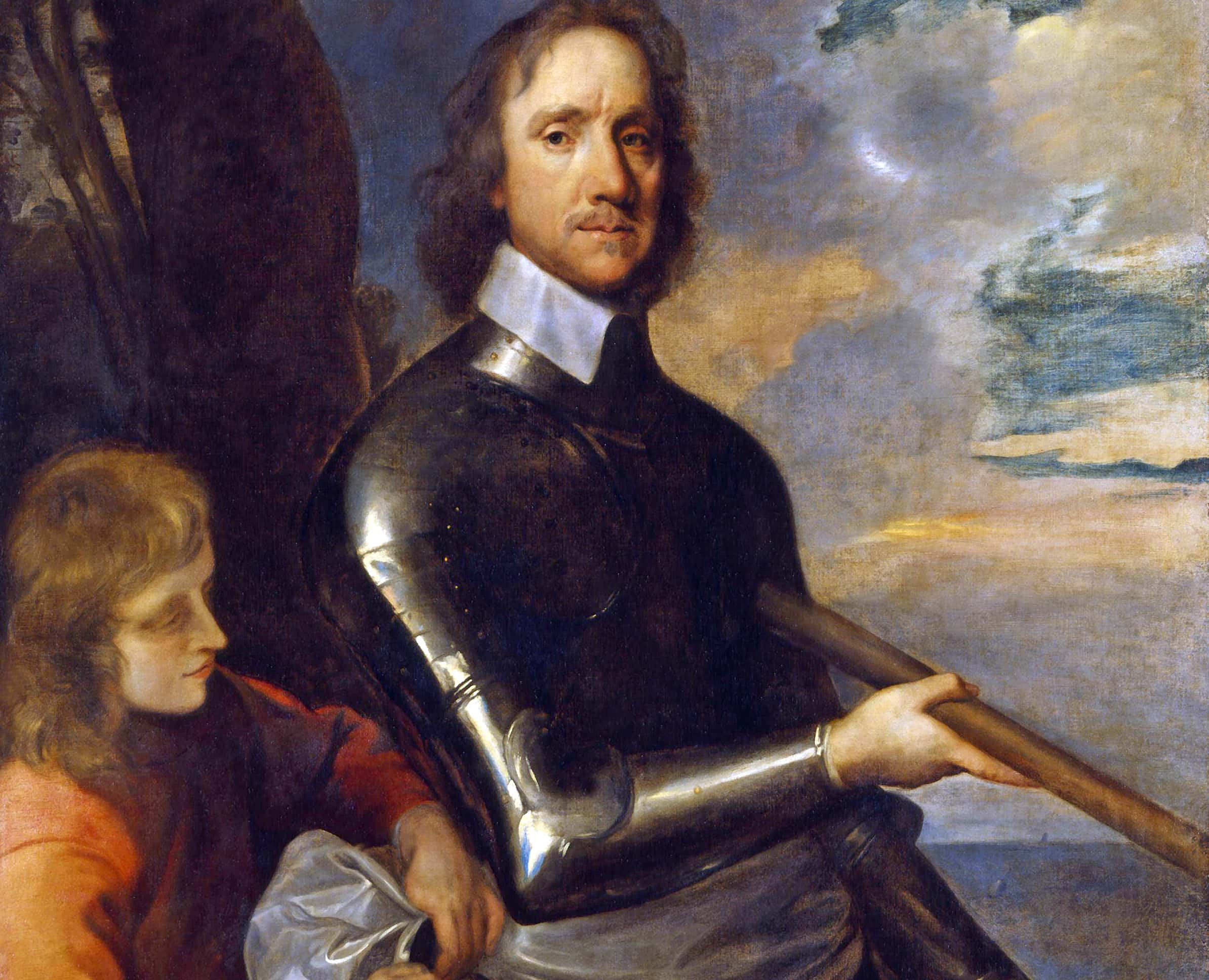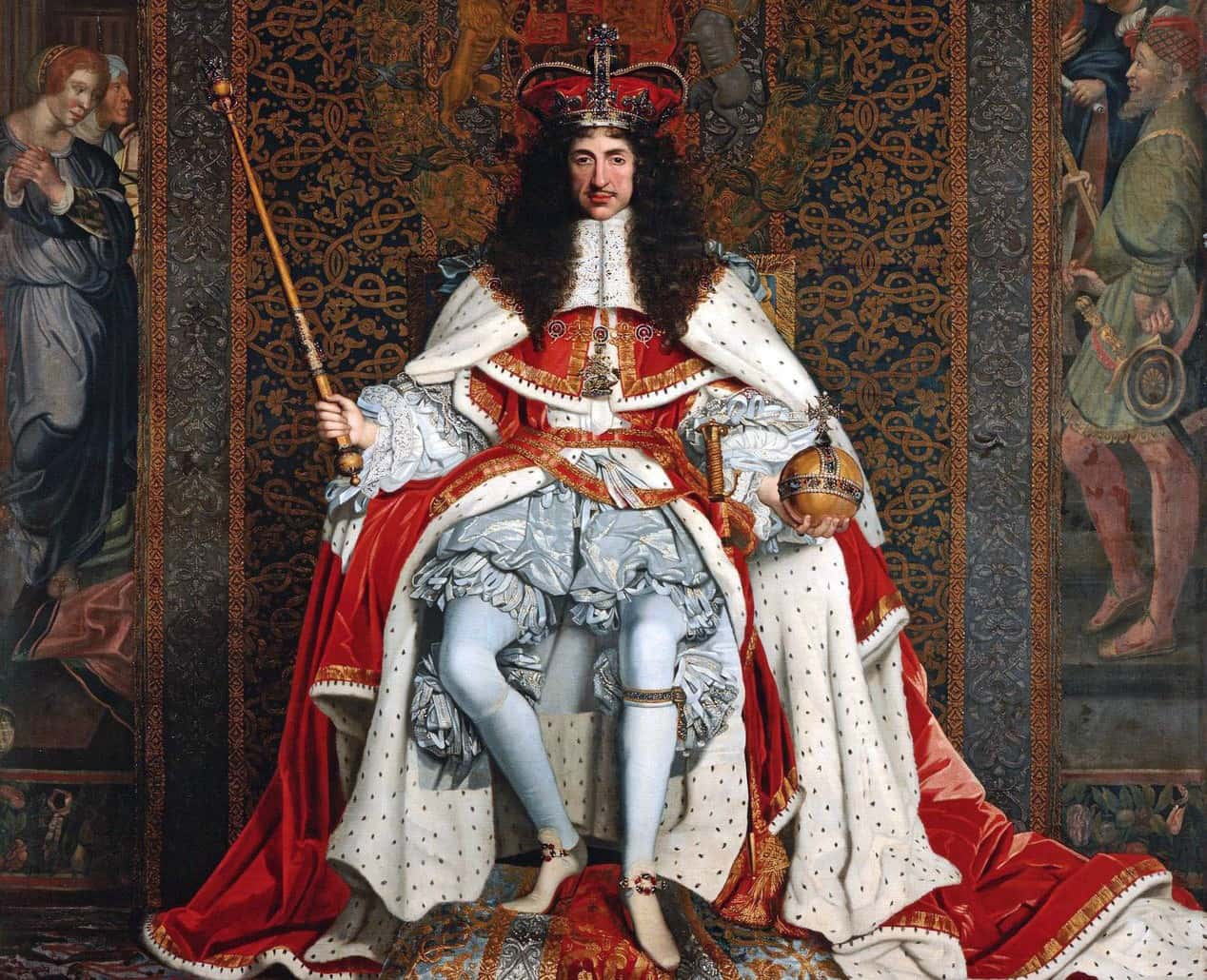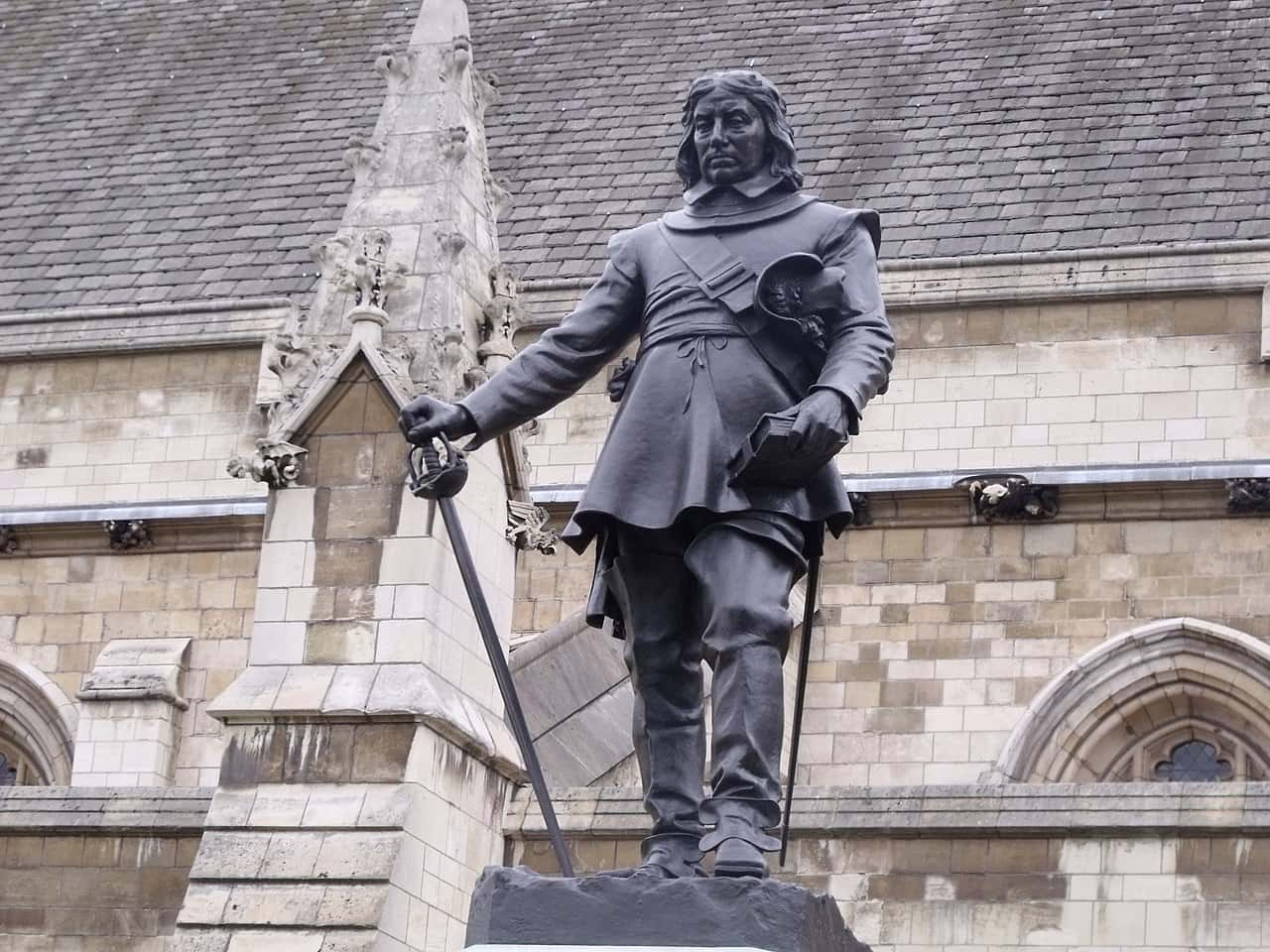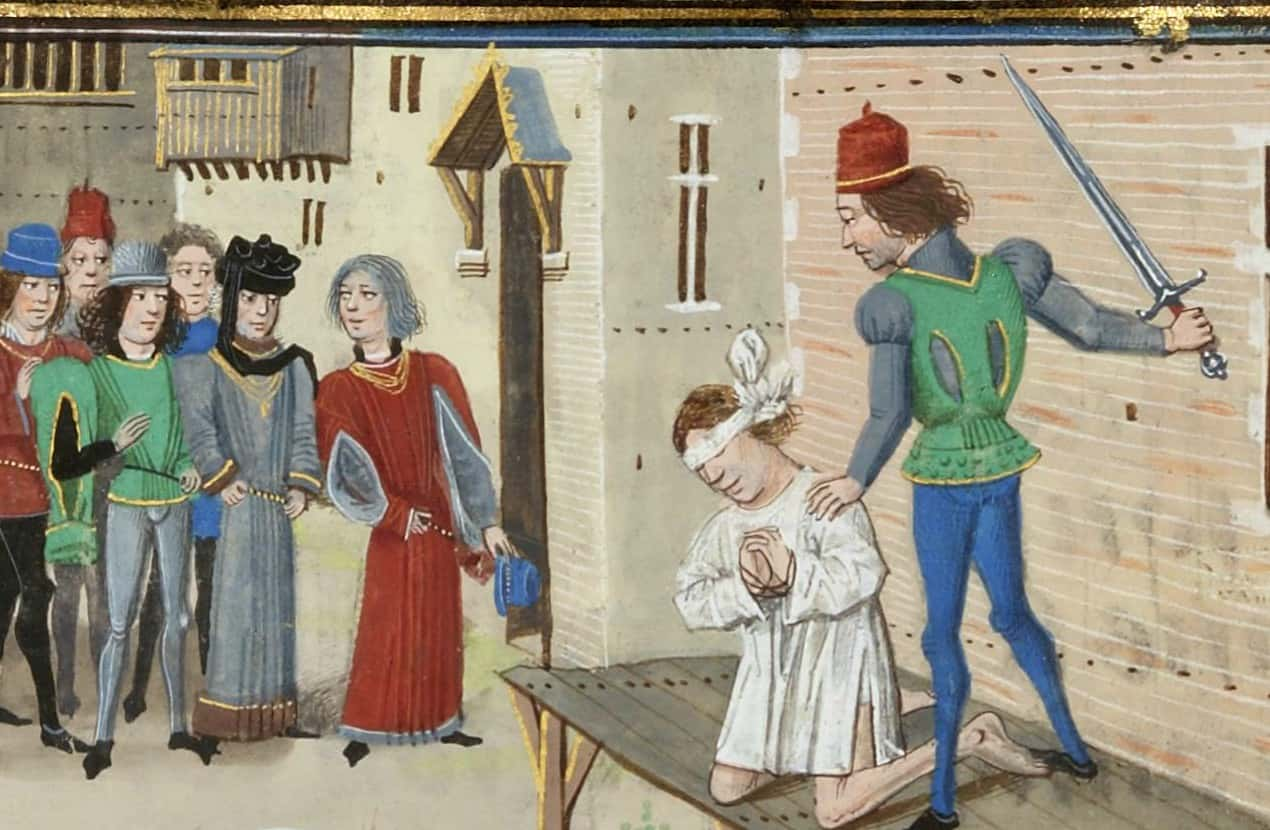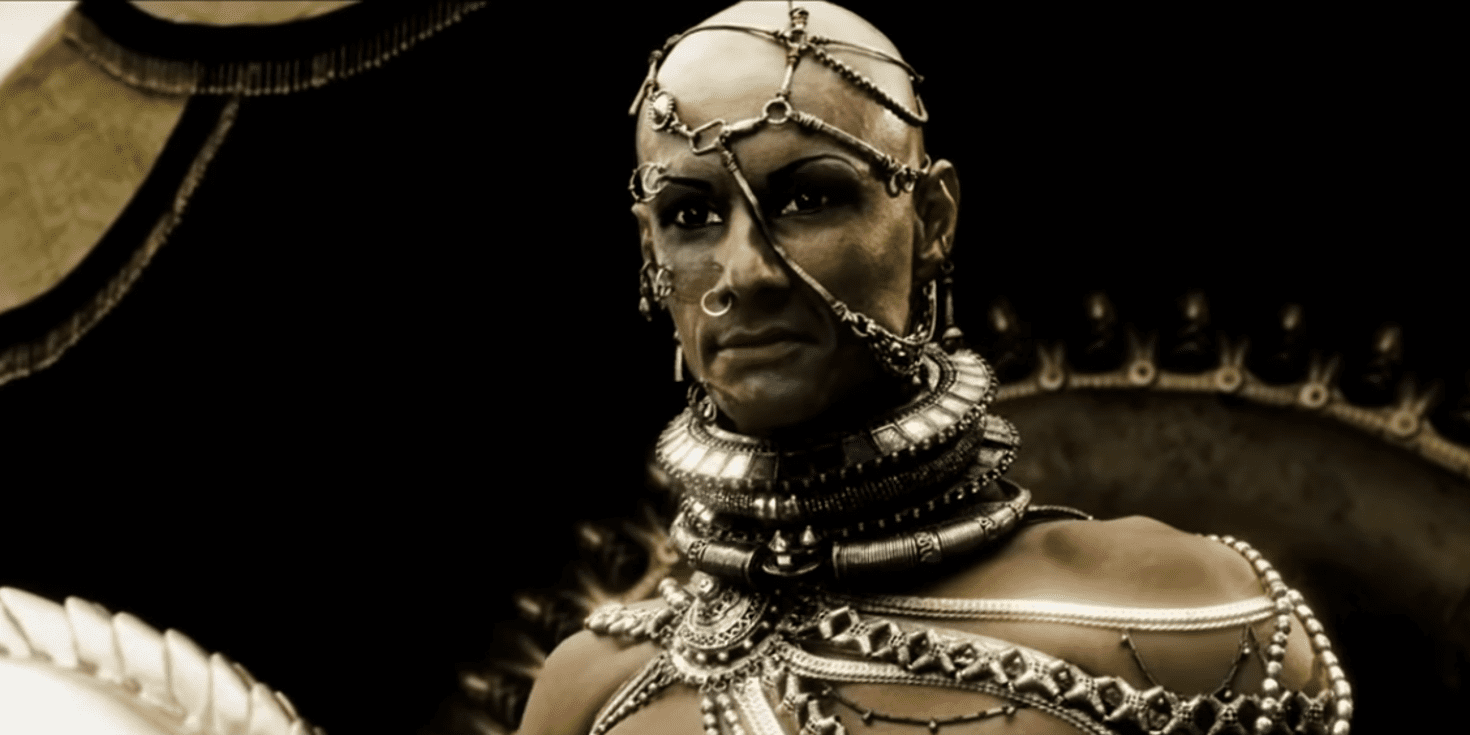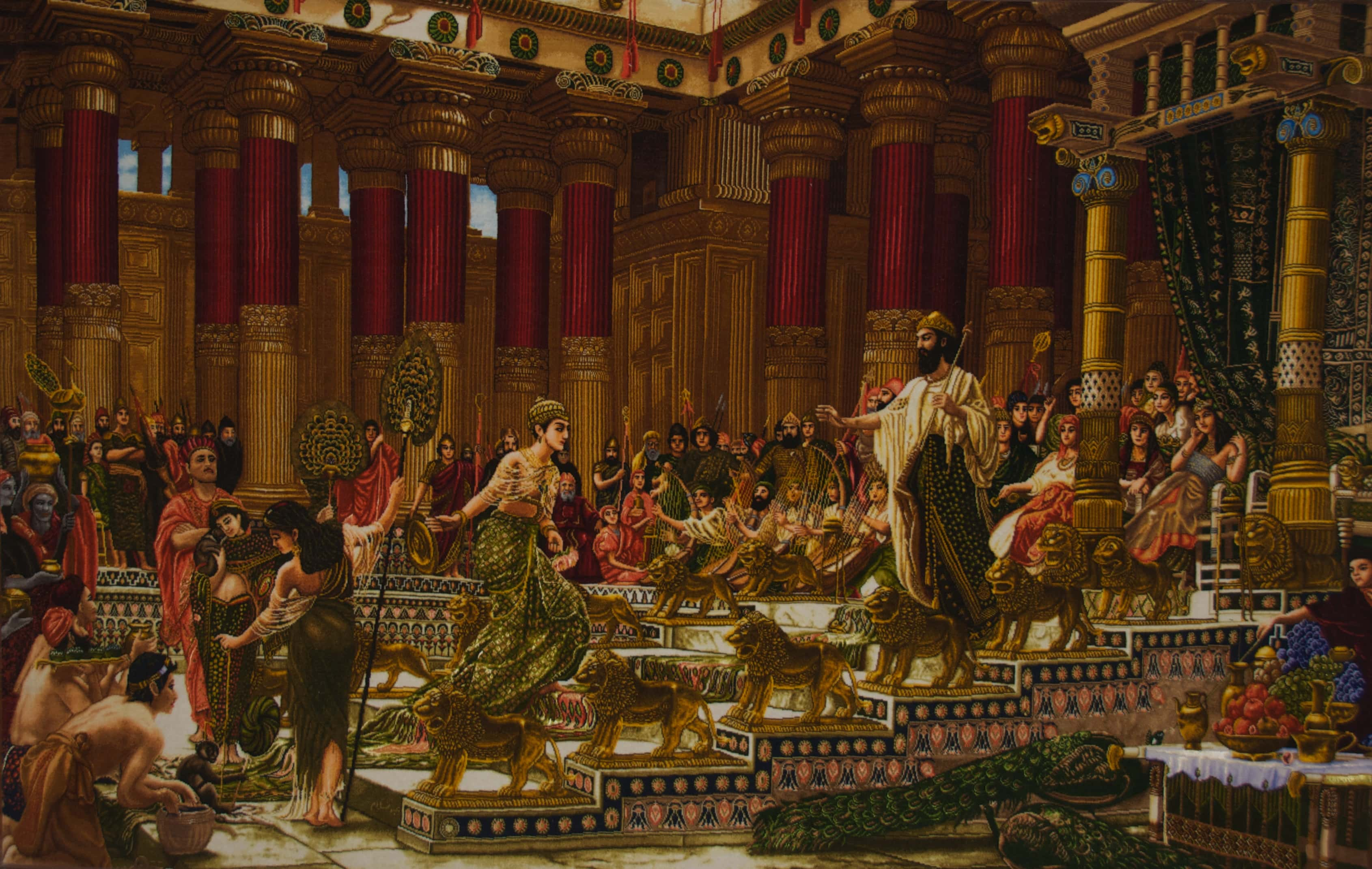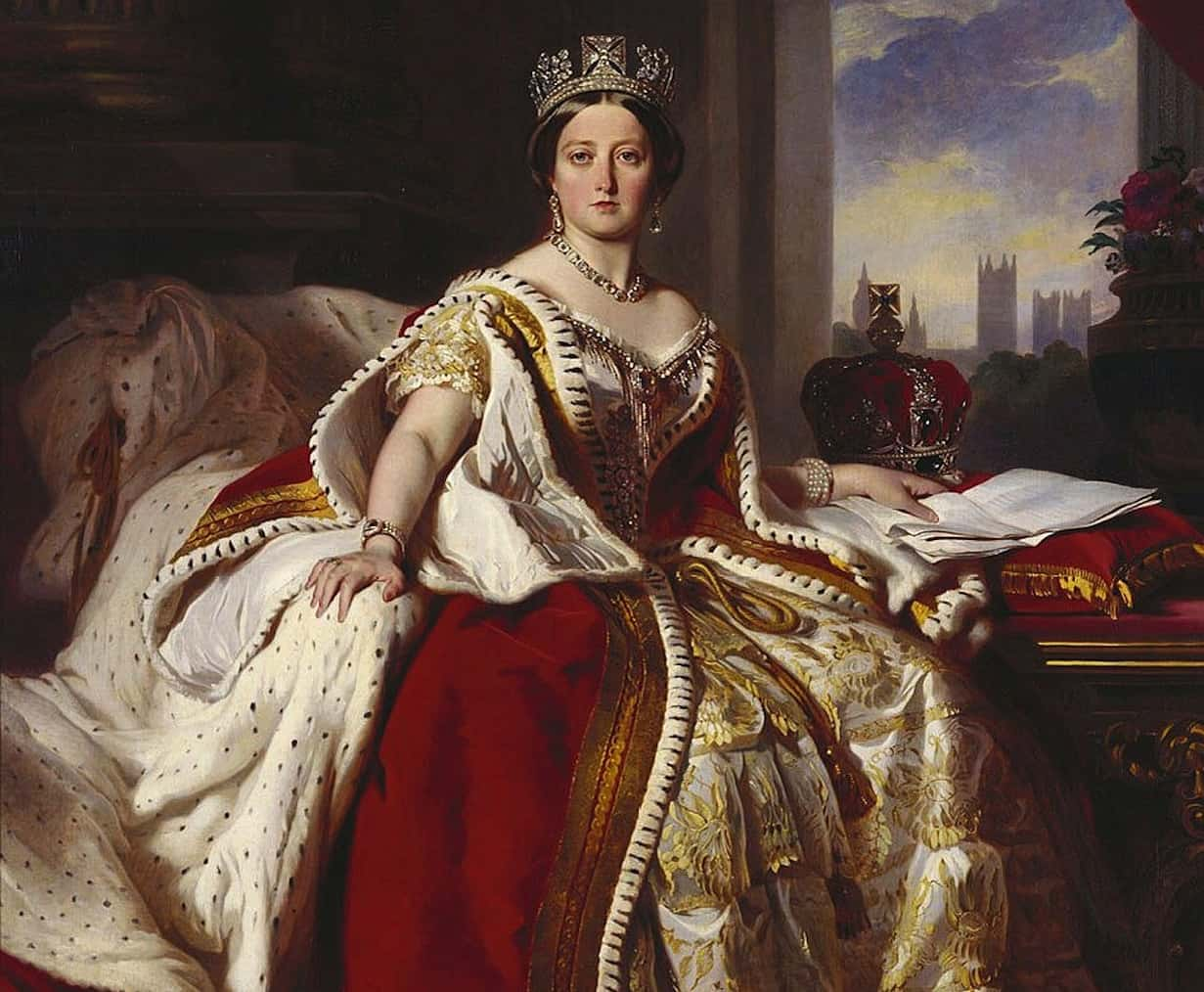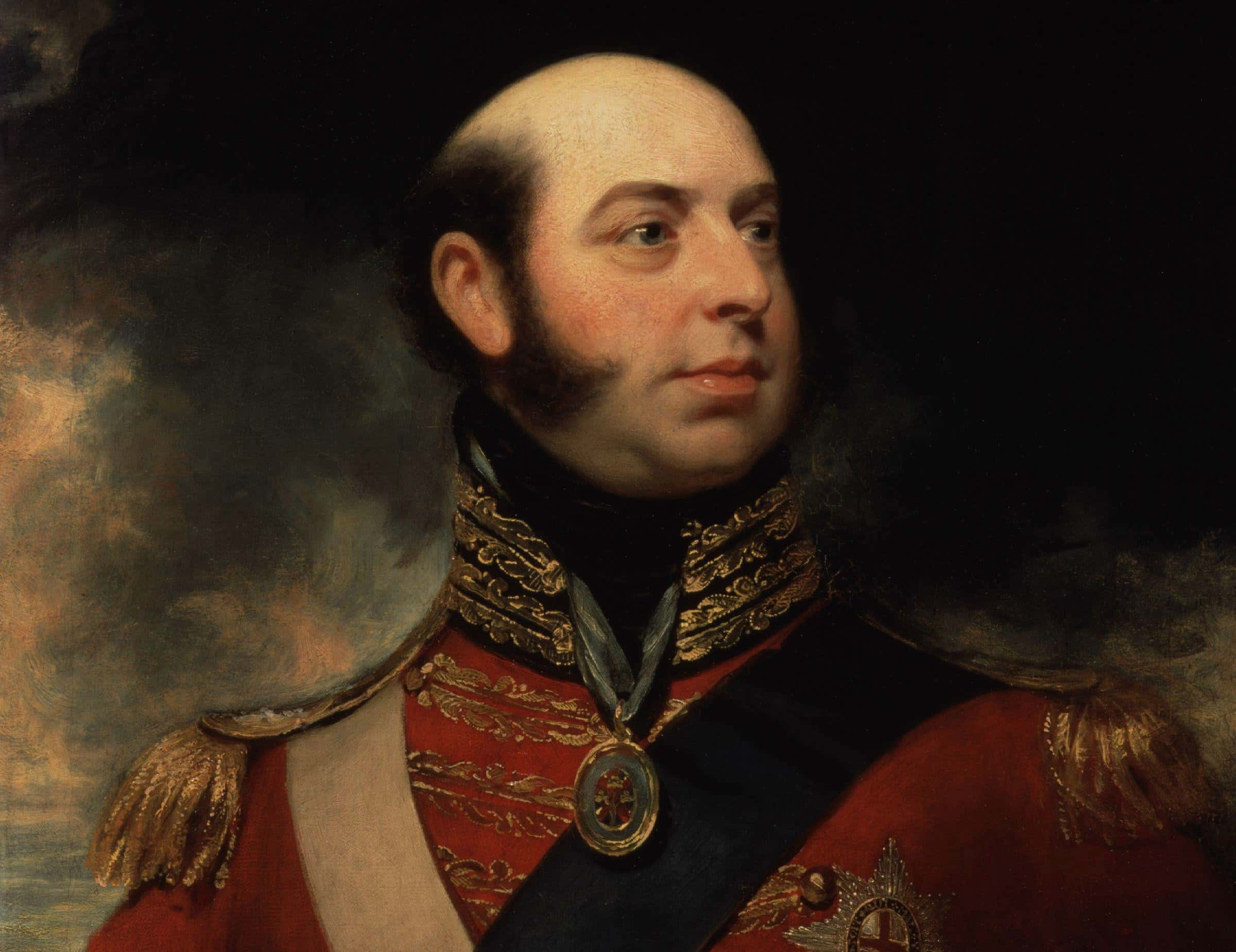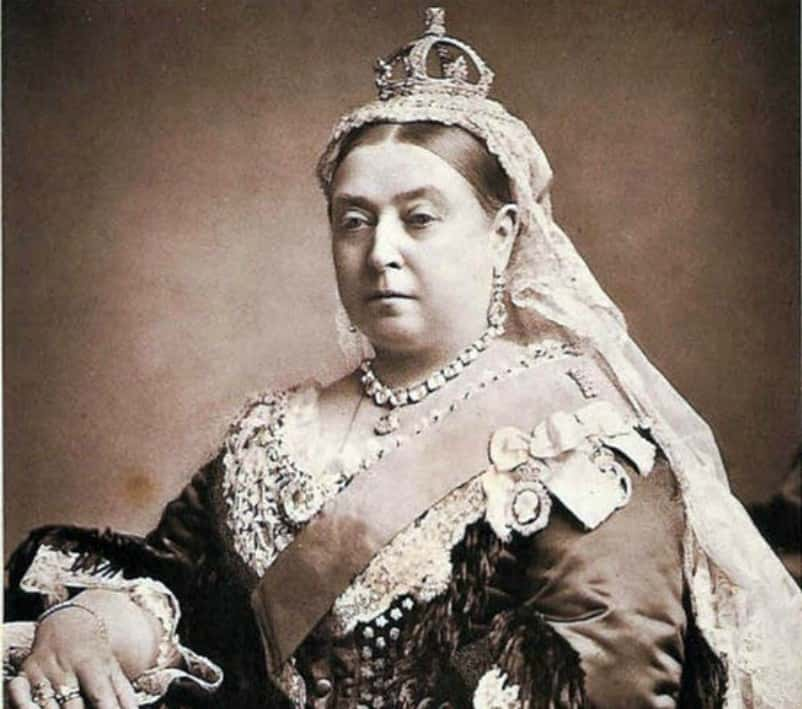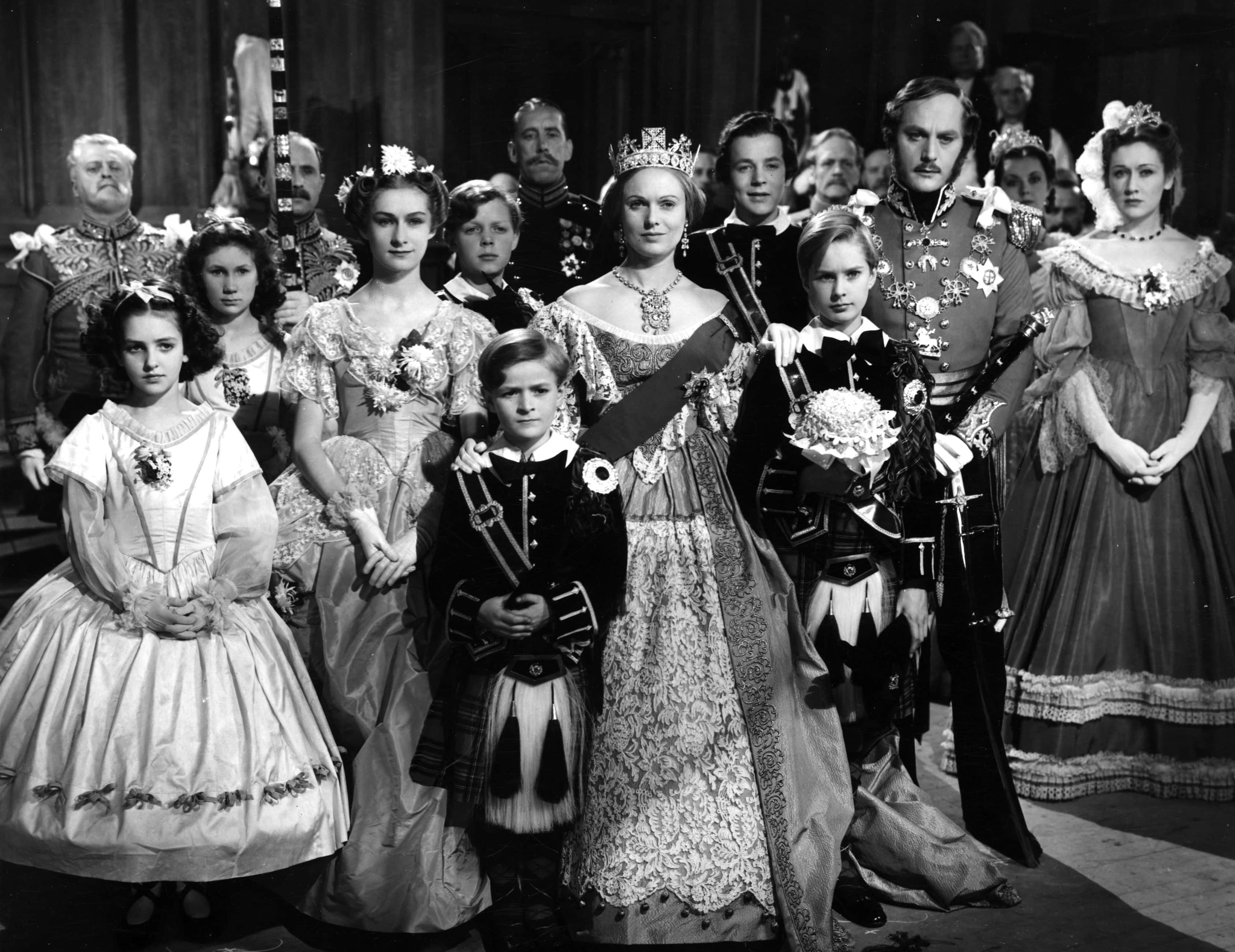Vengeance Has No Rules
An eye for an eye, as Gandhi said, may make the whole world blind—but these avengers didn't care. These are history's greatest acts of vengeance, and some were served cold, while others were served up red hot. Some were impulsive acts of destruction, while others were ingenious long cons that were years in the making. Either way, they were all absolutely vicious.
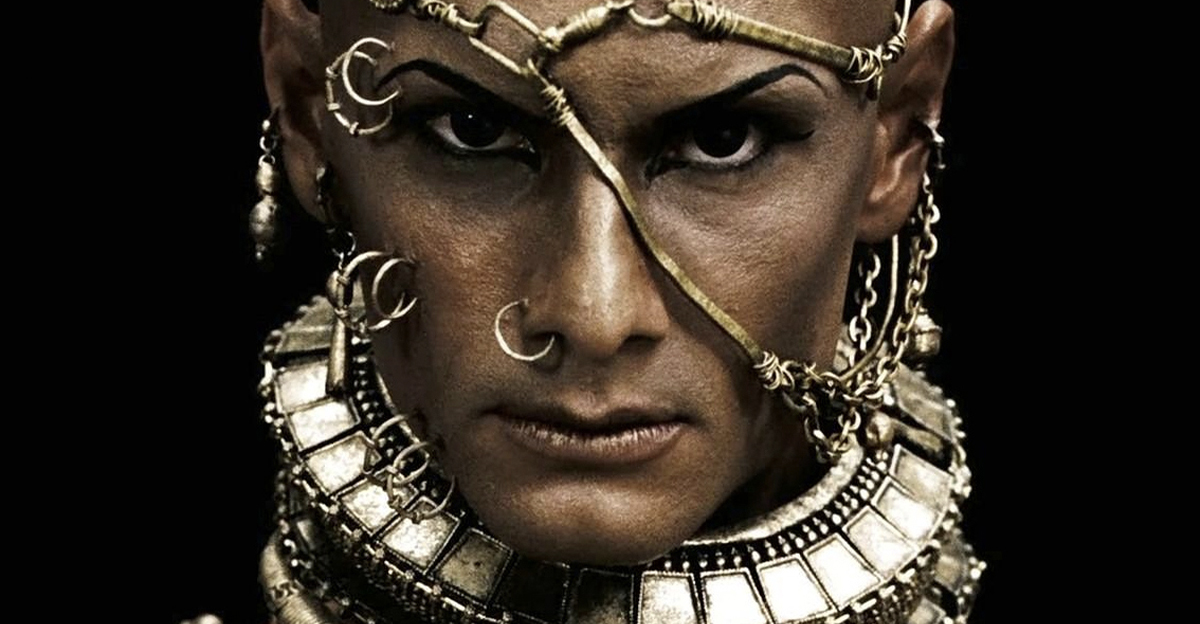
They Didn't Call Him "Vlad the Doting Host"
Pretty much every story about Vlad the Impaler is a little bit revenge-y, but this one is especially brutal. When Turkish rulers came to visit, they refused to remove their turbans in Vlad’s presence, as it was against their culture. For most people, this probably wouldn’t be a situation that required revenge. But for the man who was the inspiration for Dracula, it certainly was.
Vlad took his revenge on the Turkish visitors by having their turbans nailed to their heads.
Hello, Dollface
When the artist Oskar Kokoschka came back from World War I, he arrived to the bummer discovery that his lover and muse, Alma Mahler, had married someone else. He then moved on like a functional adult. Just kidding: he commissioned a life-sized doll in her image. Ordering a dollmaker to build it as realistic as possible—including fake tongue, teeth, and feathery skin to simulate softness—Kokoschka would pose and paint the doll in, um, inappropriate positions.
And it got even more bizarre from there.
That's a Heck of a Date
Nevertheless, even Kokoschka's relationship with his weird ex-girlfriend doll went south. He grew bored, decapitated the doll, doused it in wine, and threw it out the window. Can you believe the real Mahler dumped this catch of a man?
 Wikimedia Commons "Portrait of Alma Mahler" by Oskar Kokoschka
Wikimedia Commons "Portrait of Alma Mahler" by Oskar Kokoschka
Roman Revenge
The Roman empire may not have been known for their diplomacy, but back in 60 CE, they pulled a particularly nasty stunt. Boudicca, queen of the Iceni tribe in what is now Britain, agreed to cooperate with Roman Emperor Nero, agreeing to share her land to avoid bloodshed. Nero broke his word and instead made the area a slave province—and what’s more, Roman soldiers flogged Boudicca and mistreated her two daughters.
Well, Boudicca would live to make them rue the day they crossed her.
One Woman, Mega Carnage
Infuriated, Boudicca took her revenge: she raised an army and attacked three Roman strongholds—including Colchester, which at the time was the Roman capital of Britain. Thousands of Roman soldiers died, and Boudicca poisoned herself on the battlefield to avoid being captured.
Dark Lover
Although it was a political marriage, the union between Joanna I of Castile and Philip “the Handsome” of Burgundy was one of passion, albeit lopsided passion. By all accounts, Philip was into Joanna, but just not enough to stay faithful. Unfortunately, Joanna was really into Philip. When Philip’s mistress had the misfortune of crossing paths with his wife, Joanna apparently snapped and hacked the other woman’s hair off with scissors.
Still unsatisfied with the 'do, Jo then took a blade to her face.
 Wikipedia
Wikipedia
Family Feud, 1888 Edition
American families the Hatfields (mostly of West Virginia) and the McCoys (mostly of Kentucky) were in a long, bloody feud that lasted decades. Both sides were under the impression that they were getting revenge on the other for some previous atrocity. This led to dozens dying on both sides. The feud peaked near the end of the 19th century with what has become known as the “1888 New Years Night Massacre"—and the name barely covers just how brutal it was.
Mutually Assured Destruction
Several members of the Hatfield clan surrounded the cabin of Randolph McCoy, the McCoy's leader. The Hatfields set the cabin on fire, killing McCoy's two children and severely injuring his wife. The McCoys quickly retaliated with the battle of Grapevine Creek, in which several Hatfields were captured or killed.

History's most fascinating stories and darkest secrets, delivered to your inbox daily.
No Fury
Around 900 CE, in what is now Eastern Europe, a woman named Olga married Igor, the future king of Kievan Rus (today Kiev), and had a son, Svyatoslav. Seems great, right? Wrong: King Igor was assassinated by a rival tribe, the Drevlians, while Svyatoslav was still a child. The assassins wanted to take over the region, and tried to force Olga to marry their king, Mal. That wasn’t quite what Olga had in mind.
Nobody Puts Olga in the Corner
She wanted to be the regent of the kingdom herself until Svyatoslav was old enough to take the throne, and there was no way she was going to let the people who assassinated her husband tell her what's what. When the Drevlians sent 20 men to try and persuade her, she had them buried alive—but she didn't stop there.
The Queen of Overkill
She then told the Drevlians that she would accept the marriage proposal but only if Mal sent the top citizens of his kingdom to taker her to their capital. When he did, Olga trapped them in a bathhouse and set it on fire. Fury, thy name is Olga.
The Original Avengers
After WWII ended, some Jewish survivors of the war formed a group called Nokmim, Hebrew for “avengers”—and they did just that, tracking down surviving Nazi soldiers and killing them as revenge for the horrors of the Holocaust. In 1946, the Nokmim infiltrated Stalag 13, a detention centre in Nuremburg for Nazi prisoners of war. All of the bread for the center, the Nokmim learned, was supplied by a single bakery. A member of the group named Arye Distel got a job working for the bakery.
Over the course of several days, Arye smuggled in bottles labeled “medication” (which was really arsenic) and hid them under the floorboards of the bakery. Then finally, their plan was set in motion.
Bad Bread
One Saturday, three other Nokmim members snuck into the bakery during shift change and the four avengers painted nearly 3,000 loaves of bread with the poison. The bread was served to the prisoners the following day and over 2,000 of them fell ill. Initial reports stated that there were 200-300 deaths but a modern study by the associated press revealed no one actually died as a result.
It Wasn’t Me! Or Was It?
Notorious Old West lawman Wyatt Earp is one of the men usually credited with killing the infamous outlaw Johnny Ringo. A member of the Cochise County Cowboys, Ringo was found on the 14th of July 1882, dead of a shot to his right temple. While his death was ruled self-inflicted, many theories have sprung up suggesting foul play. Given their feud with the Cowboys, Earp or Doc Holliday are usually credited with the slaying.
Earp himself actually did claim that he shot Ringo, but many doubt his word, as he gave details that didn’t match up with the facts around Ringo’s death.
The Gunfight at OK Corral
It would be impossible to briefly summarize the events at the OK Corral, but it created the setting for one of history's greatest acts of vengeance. The participants all gave conflicting accounts of the gunfight, and countless papers, books, and movies have tried to recreate what happened that day. What is known for sure is that by the end of the shootout, three of the Cowboys (Tom McLaury, Billy Clanton, and Frank McLaury) lay dead.
Some on Earp's side were injured as well. Incredibly, the six or seven men involved in the whole thing had fired thirty rounds in just thirty seconds!
The Cowboys Strike Back
After the gunfight at the OK Corral, the surviving Cowboys tried to take revenge on Earp and the others involved. Earp was charged with, but not enough evidence was found to successfully convict him (again, witnesses and participants alike gave wildly different accounts of what happened). Instead, the Cowboys went outside of the law. Earp’s brother Virgil was attacked and wounded on the 28th of December 1881, leaving him with just the use of one arm.
Earp’s other brother, Morgan, died on March 18, 1882 after being shot while playing billiards.
Blood for Blood
Following the death of Morgan, Earp and his surviving family went to put Morgan’s body on the train to take him home to Colton, California, to be buried. However, an ambush by the Cochise County Cowboys was planned to intercept them in Tucson. Different accounts exist as to what happened exactly, but on the 20th of March 1882, one of the Cowboys, Frank Stilwell, was shot to death.
It’s unknown who exactly got him, but it’s safe to say it was either Earp, Doc Holliday, or one of Earp’s other friends. When Stilwell’s body was recovered the next day, witness George Hand claimed that Stilwell was “the worst shot up man I ever saw.”
“You Tell ‘Em I’m Coming, and Hell’s Coming with Me, You Hear?!”
With the rank of Deputy US Marshal, Earp embarked on a vendetta ride to bring down the men who had ambushed his brothers in Tombstone. Riding with him were his brothers Warren and James, Doc Holliday, Sherman McMaster, John Vermillion, Jack Johnson, Dan Tipton, and Charles Smith. The Earp Vendetta Ride, as it was called, lasted from March 20 to April 15, 1882, and resulted in the deaths of several Cochise County Cowboys.
Luck of the Earps
In one of the most remarkable moments of the Earp Vendetta Ride, Earp and his posse were traveling across the Dragoon Mountains in March 1882 when they came across the camp of several Cowboys led by Curly Bill Brocius. Both sides opened fire on each other, with the Cowboys getting the upper hand. Undeterred, Earp marched up to Brocius, who fired his shotgun at the vengeful lawman.
Miraculously, though his coat was pierced, Earp was untouched by the gunfire. He then hit Brocius with his own shotgun blast, and also shot Johnny Barnes during the confrontation. Unfortunately, there is no evidence that Earp did that while screaming “NO!” over and over (sorry, Tombstone).
Keep Your Friends Close and Your Enemies Closer
During WWII, a young Romanian man named Eliahu Itzkovitz watched in horror as a Nazi soldier killed his entire family, leaving him as the only survivor. All he remembered of this soldier was a last name: Stănescu. That was good enough for Itzkovitz. He tracked Stănescu down to the French Foreign Legion, but instead of just killing Stanescu outright, Itzkovitz did something much more devious.
The Long Con
He joined the French Foreign Legion himself, went through the Legion’s intense training, and through many careful deceptions ended up deployed in the same battalion as Stănescu. Slowly, he befriended the man who ended his family, until one day the two men were patrolling together in Băc Ninh. Itzkovitz revealed himself, confronted Stănescu, and killed him.
Prisoner’s Revenge
The members of the Liu Song dynasty really enjoyed ending people, and particularly members of their own family or the families of everyone else. Emperor Qianfei started out as his uncle’s prisoner and was constantly in fear of his own life until his father took his uncle's life and freed him. If you think he was grateful for having his life spared, think again.
He hated his father so much, he ordered ugly noses be painted on all of his father’s portraits and undid all of his father’s laws in one fell swoop creating bedlam. He also inherited his family’s killing lust and ended pretty much his entire family, beginning with his brother. He did spare a few of his uncles, but they were caged and put on display.
Pretty soon he was ending anyone who looked at him sideways until he was killed by his attendants—to the complaint of nobody.
Slice and Dice
Lorena Bobbitt’s husband John was a real piece of work: he was unfaithful, physically hurtful, and he intimately mistreated Lorena multiple times. On the night of June 23, 1993, John came home hammered, mistreated Lorena, and then fell asleep. This was the last straw for Lorena: she grabbed a kitchen blade and cut off John’s...you know what. But the story got even stranger from there.
The Aftermath
Lorena got in her car and drove away, at first throwing the appendage into a field before having second thoughts and calling the authorities. John's manhood was retrieved and later surgically reattached, but Lorena’s revenge had already succeeded. The story became a tabloid magnet in the 90s, as well as fodder for many late-night talk show jokes.
Bad Boys Bad Boys, Watchu Gonna Do
Some samurai lived on the edges of Japanese society. If a samurai didn't have a lord or master—either because their master had died or the samurai had fallen out of favor—they were known as a ronin, a Japanese expression for a "wandering man." Because a samurai was, according to the bushido, supposed to die by his own hand after his master's death or if dishonored himself, ronin were the bad boys of feudal Japan, and flouted social codes.
They often worked as mercenaries.
Revenge Is Best Served Bloody
Although ronin were often outcasts in feudal Japanese society, one group of ronin committed a feat so great and so loyal, it cemented their place in the legends of the samurai. The 47 Ronin were a rag-tag group of hard-hearted men who sought revenge after the death of their master. In the 18th century, a daimyo named Naganori Asano was forced to commit seppuku after he harmed a court official named Yoshinaka Kira.
His ronin vowed bloody revenge.
The Long Game
Naganori's band of now-bereft samurai waited and plotted for over a year before exacting their revenge, killing Yoshinaka. Of course, after they did so, they were finally allowed to perform seppuku in the name of their honor and that of their dead master. Even though 47 men died that day, they were quickly immortalized in Japanese history.
Alec Unchained
Alec Turner, the inspiration for Quentin Tarantino’s movie Django Unchained, was born a slave in Virginia in 1845. Unlike the majority of people living in slavery at that time, Alec learned how to read and write under the secret tutelage of the plantation owner’s granddaughter. Once these lessons were discovered, however, Alec was brutally whipped as punishment. It was something he never forgot or forgave.
 Django Unchained,Columbia Pictures
Django Unchained,Columbia Pictures
Remember Me?
During the American Civil War, Alec escaped, joined the Union Army, and led a platoon of soldiers back to the plantation—where he personally shot and killed the overseer that had made his life unholy.
 Django Unchained, Columbia Pictures
Django Unchained, Columbia Pictures
Becoming A Man Early
When Genghis Khan was just a child, his father Yesugei was poisoned by a rival tribe, the Tatars, when they sneakily offered him poisoned food. Genghis, who had been away, went back home to claim his position as chief of the tribe, but the tribe refused and abandoned Genghis' family instead.
Born Under A Bad Star
The troubles still weren't over for the young Genghis. He also ended up being taken by an enemy clan as a teenager, and had to make an escape to win his freedom and continue his rise to power.
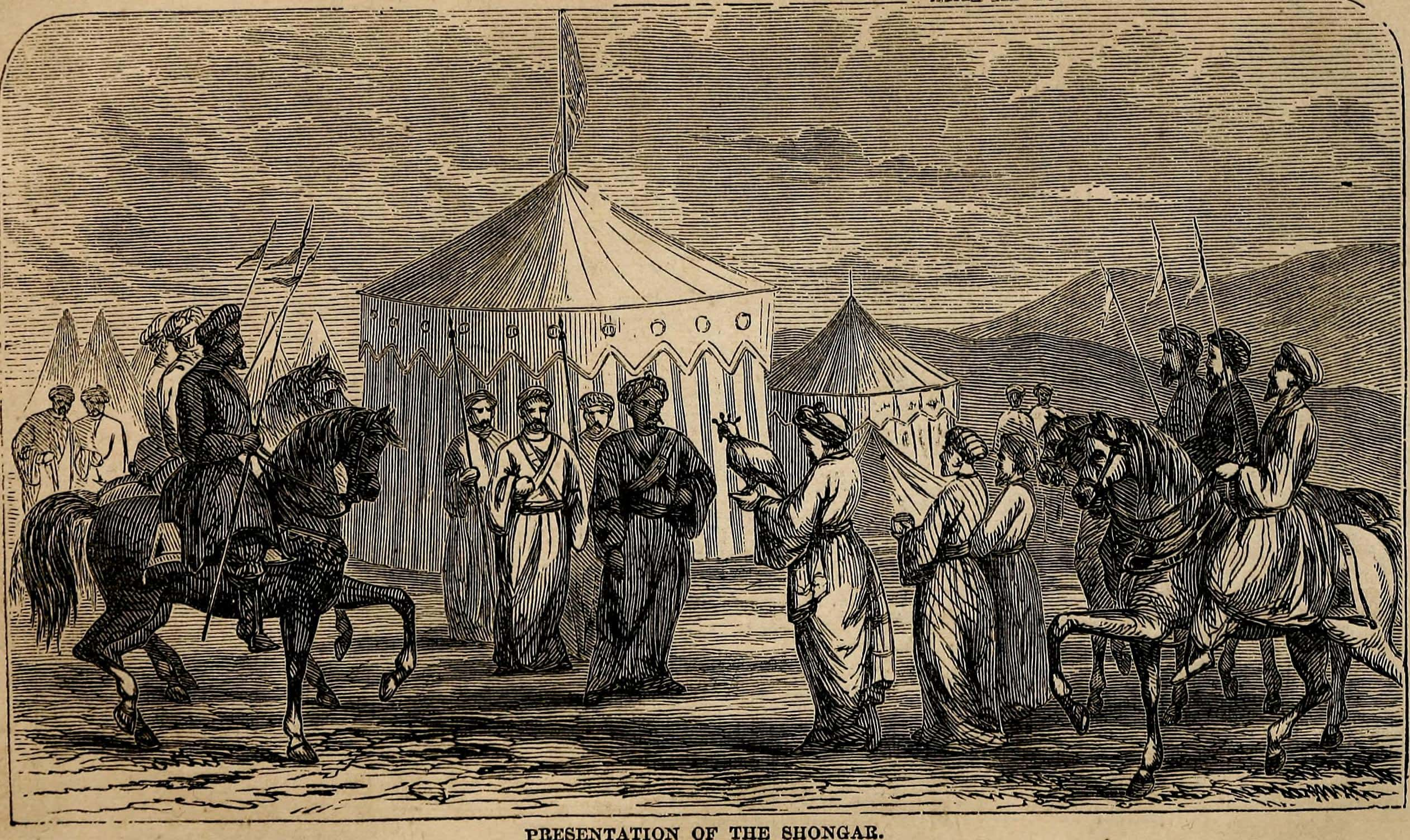 Wikimedia Commons
Wikimedia Commons
91. Mothers Before Brothers
Life in Mongolia when Genghis was young was not a piece of cake, to say the least. After his father's death, Genghis' family lived in poverty, and Genghis' half-brother Begter was beginning to eye up Genghis' mother Hoelun as a potential wife. Basically, Begter was looking for ways to flex his power as the oldest boy in the family. This didn't sit well with Genghis, and when he was 10 he ended up murdering Begter on a hunting excursion with the help of another brother.
Everything Isn’t About You
After a bad breakup, musical artist Carly Simon wrote what has become her most recognizable song: “You’re So Vain,” which includes the truly scathing lyrics “you’re so vain / you probably think this song is about you.” Simon’s ex Warren Beatty definitely did: in an interview, Simon said that “[Beatty] certainly thought it was about him—he called me and said thanks for the song" but she refused to confirm if Beatty was indeed the song’s subject.
Instead, Simon has publically equivocated about the man in the song, saying that the subject is three men, not one man, or that it is “men” in general.
No Dogs Allowed
Famously dramatic poet Lord Byron was upset to learn that the Cambridge university he attended did not allow students to keep dogs on campus. Rather than grin and bear it, Byron decided to “bear” it in a different way—by bringing one to campus. The rules, he argues, only prohibited dogs—they said nothing about pet bears.
On to the Next One
The heir to the Portuguese throne, Pedro, had eyes only for Ines de Castro, a lady-in-waiting to his betrothed, Constance of Castile. Forced into a marriage with Constance to maintain an alliance between their countries, their marriage ended when Constance died. Pedro already had multiple kids with Ines at this point, so marrying her seemed like the next natural step.
However, Pedro's infuriated father thought otherwise.
Who Knew "Pedro" was Portuguese for "Robb Stark"?
Pedro and his father Afonso argued over who he should marry next. Afonso insisted on a princess (any princess!), while his son refused and said that he'd only marry Ines. Ultimately, it ended in the worst possible way. Afonso sent three of his henchmen after Ines, and they brutally slayed her in front of one of her own children.
But the twisted tale doesn't end there.
This Means War!
In response to the death of his beloved Ines, Prince Pedro ruthlessly hunted down the men responsible. In 1361, he captured two of the three men, and exacted a bloody revenge. The men were publicly executed by having their hearts ripped out, since Pedro reasoned that neither men could have a heart after breaking his own. Poetic, in a very brutal way.
Count of Monte Cristo, IRL
Pierre Picaud, a French shoemaker who lived in the 19th century, has long been suspected as being the inspiration for the classic adventure novel The Count of Monte Cristo, written by Alexander Dumas. Picaud awoke the green-eyed monster in three of his friends when he became engaged to a rich woman. These jealous friends then reported him to the authorities, falsely accusing him of being an English spy.
While behind bars, Picaud befriended a wealthy fellow inmate, who left Picaud his fortune. After Picaud’s release, he spent the next decade meticulously plotting against—and then murdering—his three former friends.
She Was a Spoiled Brat
Empress Carlota of Mexico didn’t just have a silver spoon in her mouth, she had the whole dang tea set. Her father was Leopold I, the King of the Belgians, and her mother was the French princess Louise of Orleans. Carlota was the spoiled only daughter of the family—but none of this saved her from utter tragedy.
Her Mental Illness May Have Had a Surprising Cause
Carlota suffered from a terrifying and infamous mental breakdown in her 20s that has long puzzled historians. Though many attribute it to the emotional stress she was under, some experts have a more bizarre explanation. According to them, the “madness” was actually psychosis brought on by…magic mushrooms? Let me explain.
Her Breakdown May Have Been a Revenge Plot
According to this story, in the 1860s, Carlota was desperate to conceive a royal heir, and went to a herbalist in Mexico City to get some extra support for her womb. The pharmacist, however, was actually a secret Republican, and he prescribed her a psychedelic teonanacatl mushroom to “help.”
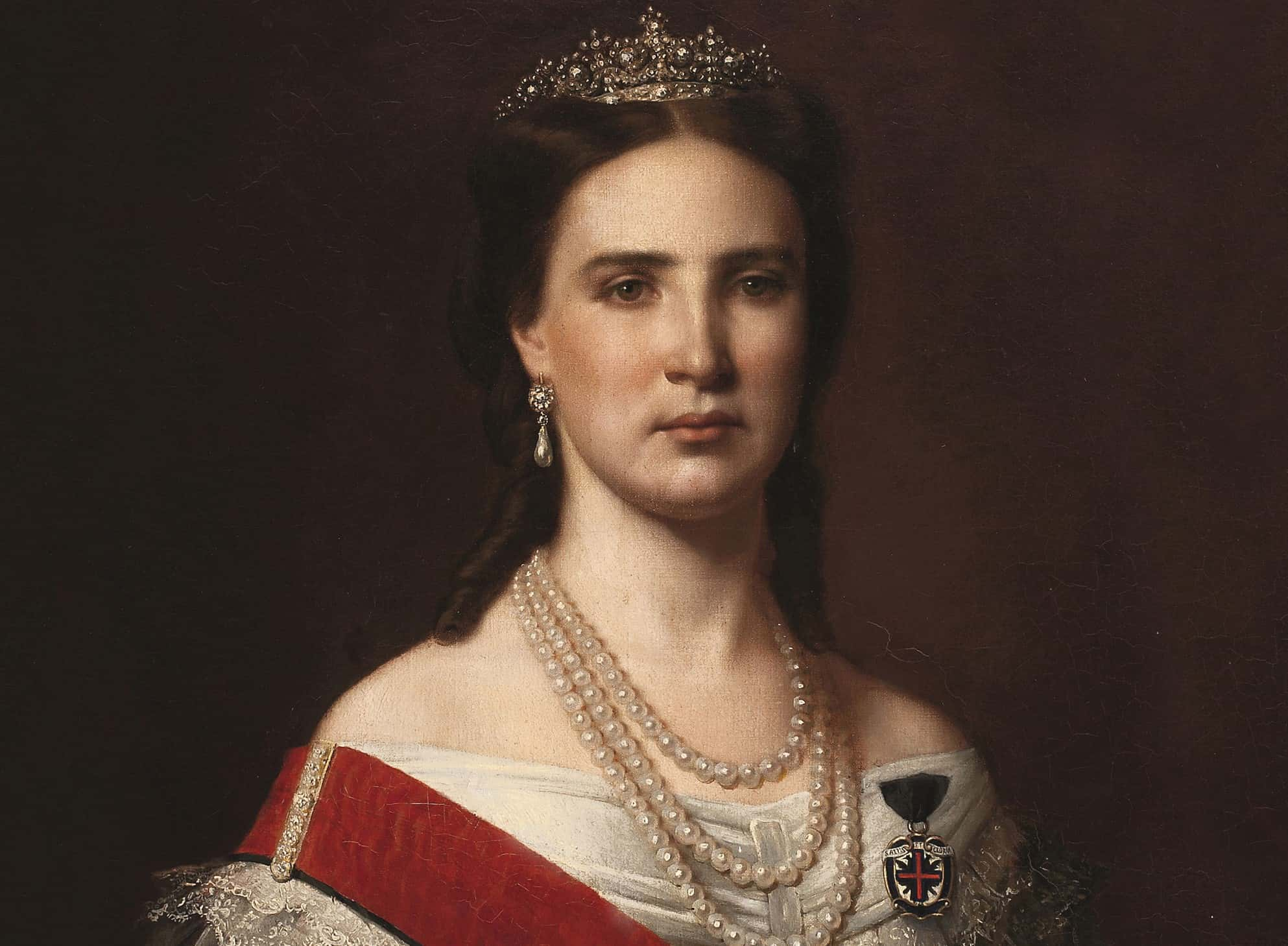 Wikimedia Commons
Wikimedia Commons
The Mystery of Carlota Lives On
In high doses, the mushroom causes intense paranoia and insanity, so the herbalist just leaned back and watched as the Empress Carlota unraveled for the entire world to witness. Whether this is the real explanation or not, we will likely never confirm the truth behind the madness of the last Empress of Mexico.
Young, Scrappy, and…Vengeful?
Aaron Burr and Alexander Hamilton had never exactly been buddies, but relations between the two men took a fatal turn in 1804. Hamilton had been instrumental in helping Thomas Jefferson win the presidency over Burr; later on, Burr ran for governor of New York, but found that once again that Hamilton was working against him.
Enough was enough: Burr challenged Hamilton to a duel and shot him, fatally wounding him and giving Lin-Manuel Miranda all the material he would ever need.
Cross Your Heart and Stick A Needle In…Wait…
In Russia, revenge takes you: in the late 1990s and early 2000s, substance use in Russia was the source of public alarm. Over the span of a decade, the number of addicts in Russia exploded from a few dozen to over 60,000. In 2000, a group of security guards in Russia grabbed a suspected dealer, beat him publicly, and then—and this is the real kicker—tied him pantless to a tree, where they repeatedly stuck his bare bottom with hypodermic needles.
Ouch.
Black Magic Woman
Seductive. Cunning. Dangerous. Isabeau of Bavaria was a powerful queen in an age of obedient women, and she allowed no man—not even her own unhinged husband—to control her. From her tragedies to her courtly schemes, there was often little difference between Isabeau’s life and an episode of Game of Thrones. Because of the absolute turmoil in her life, Queen Isabeau of Bavaria has gone down as one of the greatest villainesses in history.
By the end of her reign, so much, scandal, revenge, and death had happened around her, people even whispered that she was actually a sorceress.
This Wasn’t in the Job Description
In 1392, Isabeau's husband Charles VI suffered an infamous episode that changed his reign forever. He had a total mental breakdown while campaigning, and killed four of his own men in a fit of paranoia. Immediately after the outburst, he fell into a coma. Suddenly, Isabeau had gone from hot trophy wife to one of the only people who could hold Charles’s reign together.
Here to Stay
At the time, the French court was sure Charles’s bout of insanity was divine intervention; why else would the perfectly healthy king turn so suddenly horrific? But the modern diagnosis is even darker. According to many historians, King Charles was most likely suffering from paranoid schizophrenia. In other words, it was only going to get worse.
I’m Your (Only) Man
King Charles VI’s malady didn’t just make him weak and incapacitated—it could also make him incredibly cruel. According to some sources, Isabeau established a country getaway in a farmhouse in Saint-Ouen and took up a local lover. When Charles found out about it during a lucid period, he reportedly drowned the man in the Seine.
Skidmore Bully
Skidmore, Missouri had a problem, and that problem had a name: Ken Rex McElroy, the town bully. McElroy took bullying to a whole new level in Skidmore, stealing livestock, committing arson, attacking women, and even forcing a very young girl to be his “bride.” The town, to put it lightly, did not like him—and one day, they finally took revenge on their tormentor.
 Wikimedia Commons
Wikimedia Commons
See No Evil
On July 10, 1981, McElroy was fatally shot on Main Street in Skidmore. Although there were between 30 and 40 witnesses, and the crime was committed in the middle of the day, the townspeople developed a suspicious group amnesia, and refused to cooperate with the authorities.
Keeping the Peace
King Edward I of England was also known as Edward Longshanks, or the more sinister "Hammer of the Scots." He was known for his deliciously macabre sense of humor, ruthless ambition, and devious Machiavellian mind.
That's My Sister!
No one was spared from Edward Longshanks' brutal temper. Take for instance, his revenge against the Earl of Leicester - Simon de Montfort. Simon had decided to defy Edward’s father by marrying his sister without permission. Edward’s response has been called "an episode of noble bloodletting unprecedented since the Conquest [of William the Conqueror]."
And Now the Rains Weep O’er Montfort’s Halls
Edward’s time for revenge against Simon de Montfort came when they fought at the Battle of Evesham in 1265. Despite Montfort’s best efforts, the barons and their army were completely defeated. In an example of his ruthlessness as king, Edward ignored the tradition of prisoners and ransoms, preferring to wipe out his enemies on the battlefield, even when they were hoping to surrender.
Montfort was forced to watch his son brutally killed before he himself was put to the sword. But Edward didn't stop there. In a final act of spite and vengeance, Edward ordered that Montfort’s body be mutilated; his head, hands, feet, and manhood were all removed from his body.
Dangerous Gloves
Conan II, the Duke of Brittany in the early 11th century, did not get along with William of Normandy. Conan refused to support William’s plan to invade England in 1066, and in fact, took advantage of William’s absence during the invasion to try to take control of William’s lands himself. William succeeded in his invasion, which meant that Conan had seriously upset the newly minted King of England. Big mistake. Huge.
William took his revenge by having Conan assassinated, reportedly with poisoned riding gloves.
A Ruler Among Men
Oliver Cromwell is best known for his time as Lord Protector of the new English Republic. He was one of the main figures who sought to depose the English monarchy and execute King Charles I. He succeeded in gaining power in England and setting up a Republic before he died of natural causes in 1658.
It’s the Principle of the Matter
Even though Cromwell died of natural causes, his brutal policies towards Royalists and his execution of Charles I were not easily forgotten. When Charles II and his Royalist forces regained power in England in 1660, they made sure everyone who was involved with the revolution was punished, including the long-deceased Cromwell.
Charles II had Cromwell’s body exhumed to receive its just desserts—his already rotting corpse was hung in chains before finally being beheaded. Someone was really into symbolism.
For All to See
After his dead body was publically hung, Oliver Cromwell was beheaded. The head was then placed on a pole and positioned outside Westminster Hall, presumably as a warning against further insurrection. This message must have taken quite a while to sink in because Cromwell’s head remained on display until 1658—a full 14 years after it was initially removed from its bodily companion!
Straight to His Head
The only reason that Cromwell’s head stopped being displayed in front of Westminster Hall was because of inclement weather. When a fierce storm swept through London in 1658, the winds knocked over the pole that was holding the head. It crashed to the ground and rather than find a replacement pole, it was decided that all this attention was probably getting to Cromwell’s… head.
Dying (Again) With Loved Ones
Cromwell’s body wasn’t the only one to be exhumed for posthumous punishment by the Restoration crown of Charles II. The other key figures in the execution of Charles I were also raised from their deathly slumbers, only to be publically executed alongside their leader. These men were Robert Blake, John Bradshaw, and Henry Ireton.
 Wikimedia Commons, Andrew Butko
Wikimedia Commons, Andrew Butko
Might as Well Have Some Fun
Julius Caesar was captured by Cicilian pirates in 75 BCE while he was on the Aegean Sea. The pirates demanded a ransom of 20 talents of silver for Caesar’s return (around $600,000 today), but Caesar indignantly demanded that they ask for more money; 50 talents. They did so, and while the ransom demand was being delivered Caesar charmed many of the pirates, playing games with them and generally demanding that they treat him as one of their own.
However, in the midst of all this, he made a dark vow to his captors.
Neither Forgiven Nor Forgotten
Julius Caesar promised the pirates that he would not forget the insult of being captured. Caesar kept his word: once the ransom had been paid and he was returned to Rome, he made a point of hunting down the pirates, capturing them, reclaiming the 50 talents of silver, and then having his men slit their throats.
Real-Life Revenant
Hugh Glass was an American frontiersman who lived and worked in the late 18th and early 19th century. While on a group expedition, Glass came between a mama grizzly and her two cubs, and he was brutally mauled by the bear. Glass and his companions expected that he would die from his injuries, and Glass asked that two men from the company stay behind with him to bury him after he died.
These two men, John S. Fitzgerald and a man known as “Bridger,” stayed back—but not for long.
 The Revenant (2015), Regency Enterprises
The Revenant (2015), Regency Enterprises
Bulletproof Glass
Fitzgerald and Birdger abandoned the terribly wounded Glass fairly quickly and returned to the group, lying that Glass had died. Glass, however, did not give up so easily. He regained consciousness and realized that he had been abandoned by his fellow frontiersmen, left without a weapon or food or any useful tool, and that his precious rifle had been stolen from him. Glass set his own broken leg and crawled the 200 miles to the nearest fort—but it wasn't just survival that was on his mind.
He then tracked down the two men who had abandoned him. Glass forgave Bridger, who had been only 17 at the time, but when he found Fitzgerald he exposed him publicly—and demanded that Fitzgerald return his rifle.
 The Revenant, Regency Enterprises
The Revenant, Regency Enterprises
A Taste of His Own Medicine
There's nothing worse than opening your inbox only to have to wade through trash to get to the important stuff. Back in 2003, Michigan entrepreneur Alan Ralsky was known as “Spam King” for the millions of unwanted spam emails he sent. In retaliation, people who were on the receiving end of these spam emails signed Ralsky up for physical spam, in the form of junk mail, which would arrive at his lavish house.
At the height of this prank, Ralsky was receiving over one hundred pounds of junk mail every day.
Dread Pirate Jeanne
After her husband was beheaded by the King of France in 1343, a woman Jeanne de Clisson sprang into action. She swore that she would have her revenge on the rulers who had killed her husband, and so she reached out to the King of England for assistance. The English King, along with some Breton sympathizers closer to home, paid for Jeanne to outfit three warships, which she painted black. Apparently not one for subtlety, Jeanne named the flagship My Revenge.
Let the Bridges I Burn Light the Way
Clisson then proceeded to spend year terrorizing the English channel, hunting down French ships. When she caught one, she would end nearly all the sailors—but she would always save one or two, so that they could return to the French King and tell him what Jeanne had done. She definitely earned her nickname: “The Lioness of Brittany.”
Don’t Push The Pusser
Aside from having a great name, Buford Pusser was also one heck of a sheriff. He was the head lawman in McNary County, Tennessee from 1964-1970, and he seems to have been a member of the moral police as well. Pusser was well known in the county for his hard-line stance against all manner of vices, from moonshining to gambling, and it earned him some powerful enemies, including some groups of organized crime.
The State Line Mob attempted to assassinate Pusser in 1967. They failed to take out the sheriff, but Pusser’s wife Pauline was killed in the attack. It was a mistake they'd come to regret.
He Moves in Mysterious Ways...
Pusser vowed to take his revenge, as he knew who the four attackers were. The first one was ended by a hitman, widely assumed to have been hired by Pusser. The next two just turned up fatally shot in Texas; again, many assume that Pusser was responsible, but no one has ever been able to prove it. The last assailant escaped, sort of—he was put behind bars for an unrelated incident. It seems like lock-up might have been the safest place for him to be.
Fairly Middling Depiction
We’re probably all familiar with the Battle of Thermopylae thanks to the 300 film franchise. In both the films produced thus far, the villain of the story is the giant, heavily bejeweled Persian king known as Xerxes. IRL, Xerxes ruled the Achaemenid Empire at its pinnacle for two decades before being assassinated by his own bodyguard. He's perhaps best known for his failed invasion of Greece.
300, Warner Bros.
And Don’t You Do That Again!
Xerxes allegedly had a very short fuse, and he wasn’t afraid to lose his temper when he got in the mood. The most famous example of such was when he was preparing to invade Greece by building a bridge of boats across the Hellespont (a narrow strait separating Turkey from Europe). When the ships were blown off course by a storm, his reaction was utterly bizarre. The furious king blamed the sea for disrupting his plans.
As a result, he commanded the sea be given 300 lashes as punishment. While you may laugh at that kind of thinking, the next attempt to build the ship-bridge was successful!
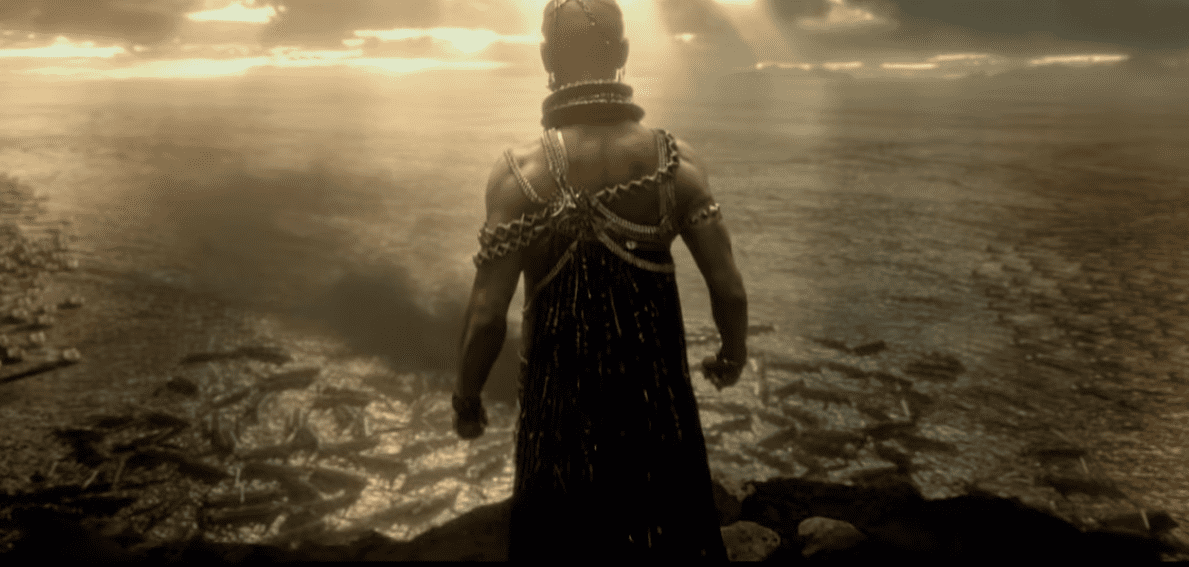 300: Rise of an Empire, Warner Bros.
300: Rise of an Empire, Warner Bros.
A Feud to Make Titus Andronicus Blush
Aside from his infamous defeat in Greece, an alleged low point for Xerxes on a personal level was the problem concerning his affairs. A devoted womanizer, Xerxes began an affair with his niece, Artaynte. When Xerxes’s wife heard of the affair, she ordered Artaynte’s mother to be brutally mutilated in revenge (we’ll spare you the gruesome details)—but she didn't stop there.
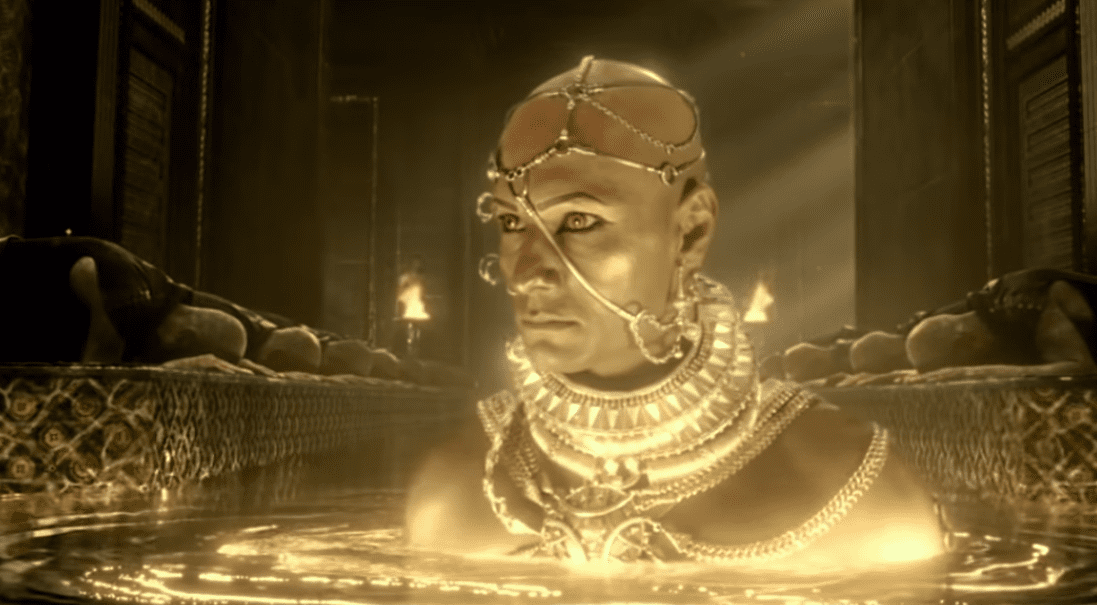 300: Rise of an Empire, Warner Bros.
300: Rise of an Empire, Warner Bros.
She Calls the Shots
When Xerxes’s brother understandably went on the warpath, Xerxes killed said brother, his nephews, and every man who rallied to their cause. Of course, we have to remember that the source for this story was the Greek Herodotus, whose histories have to be taken with a few grains of salt.
V for Victory
You know you’ve made an impact on society when the time you were alive is named after you in tribute. Queen Victoria did indeed give her name to the Victorian era, which oversaw immense changes worldwide. She's become something of a legend, but she wasn’t without her enemies; her relationship with the British government was often strained, her popularity frequently went up and down for different reasons, and she was subject to multiple assassination attempts.
Missing You, Dad
Victoria’s father, Prince Edward, sadly died when Victoria was less than one year old. Her mother, as well as her mother's rumored lover, Sir John Conroy, would act as her guardians from then on.
Rumor Has It…
Victoria’s early reign began well, but then, a rumor spread that one of her mother’s ladies-in-waiting, Lady Flora Hastings, was impregnated by Sir John Conroy. Hasting also showed a noticeable growth in her abdomen, which caused the rumors to swirl more. Since Conroy had helped make her childhood unbearable, and since Hastings had been one of the women who had helped Conroy out in that endeavor, Victoria made it clear that she believed the rumors (and thus legitimizing them further).
However, after Hastings died, it was revealed that she had had a tumor on her liver. The consequences for Victoria were brutal. She was publicly shamed for spreading gossip to ruin a sick woman’s reputation.
This Needs a Musical
Victoria’s childhood was an isolated one. Her mother (also named Victoria) and Sir John Conroy came up with a parenting system that prevented young Victoria from seeing people that weren’t pre-approved by them first. This system, known as the Kensington System, was done to make Victoria dependent on them, which they hoped would continue into her reign as monarch.
No wonder Victoria described her youth as “rather melancholy.”
Mommy Dearest
In the spring of 1861, after a lifetime of strained relations with her daughter, Victoria’s mother died. Victoria was at her mother’s side—by then, they were back on speaking terms—and when she went through her mother’s personal letters, she found out a letter that revealed the heartbreaking truth. It said that her mother had “loved her deeply.” This made her blame Sir John Conroy for turning her mother against her during her youth.
Stay Out of My Life!
In order to keep Sir John Conroy in a close and influential position in Victoria’s life, he and Victoria’s mother tried to persuade her to make him her private secretary. Victoria refused every time, however. And the moment she became queen, she exacted her long-awaited revenge. Queen Victoria immediately had Conroy “banned from her presence,” and she never had to deal with him again.
Honestly, kudos to her!
Crash Landing Into Love
In 2011, a woman called an airline with a startling tip: her ex-lover posed a terror threat to the LAX flight he was set to embark on to Paris. Of course, it was all false. She then sent her ex a text which read, “Don’t even try to get on the plane called the fbi Sucks to be all of you hope you all have good attorneys” (sic). But then somehow, the story got even more insane.
A Lot Can Happen in Four Days...
She was promptly charged with providing false and misleading information by fabricating a terror threat after the call was discovered to be a ruse. The kicker? She was furious that her ex unfriended her on Facebook after the end of their fling… which lasted four days.
Sources: 1, 2, 3, 4, 5, 6, 7, 8, 9, 10, 11, 12, 13, 14, 15, 16, 17, 18, 19, 20, 21, 22, 23, 24, 25, 26, 27, 28, 29, 30, 31, 32, 33, 34, 35, 36, 37, 38, 39, 40, 41, 42, 43, 44, 45, 46, 47, 48, 49, 50, 51, 52, 53, 54, 55, 56, 57, 58, 59, 60, 61, 62, 63, 64


